Archived Blog Posts
How Emergency Board Up Services Can Save Your Property
9/12/2023 (Permalink)
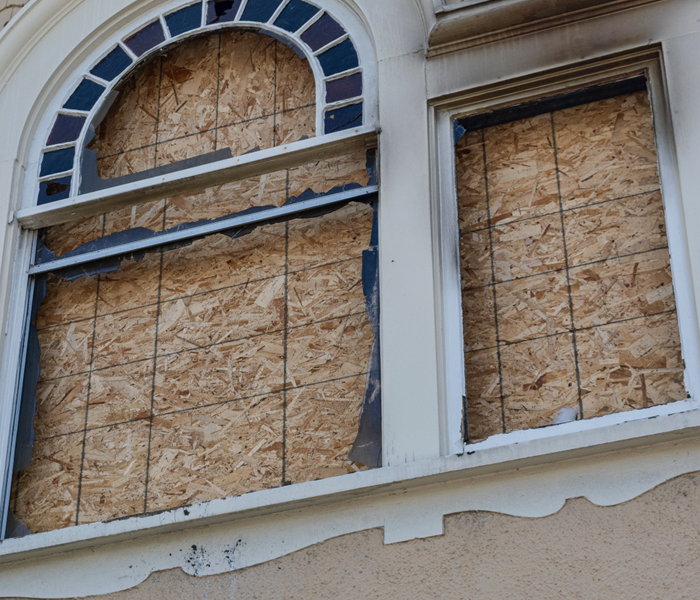 When disaster strikes, board up services help prevent your property from additional damages.
When disaster strikes, board up services help prevent your property from additional damages.
In times of disaster, such as severe storms, fires, or break-ins, your property may be exposed to various risks, including further damage, theft, or unauthorized entry. This is where emergency board up services come into play. These services offer a crucial solution to protect your property from additional harm and secure it until proper repairs can be made. In this blog post, we will explore the importance of emergency board up services and how they can save your property when disaster strikes. By understanding the benefits of this proactive measure, you can take swift action to safeguard your home or business in times of crisis.
Immediate Protection from Further Damage
When disaster strikes, your property may be left vulnerable to additional destruction. Broken windows, damaged doors, or compromised structural elements can expose your property to the elements, pests, and intruders. Emergency board up services provide an immediate solution by securing these openings, preventing further damage from weather, debris, or potential criminal activities.
Enhanced Security against Unauthorized Entry
An unsecured property is an invitation for theft, vandalism, or unauthorized entry. Emergency board up services effectively deter potential intruders by barricading access points and reinforcing weak areas. By installing sturdy boards or protective coverings, these services create a visible barrier, deterring opportunistic criminals and minimizing the risk of theft or vandalism.
Mitigation of Water and Weather Damage
Natural disasters often bring harsh weather conditions, such as heavy rains or high winds, which can lead to water damage and subsequent mold growth. Emergency board up services play a vital role in minimizing the exposure of your property to these elements. By sealing off broken windows, damaged roofs, or compromised entry points, these services can significantly reduce the risk of water intrusion, protecting your property from extensive water damage and associated issues.
Preservation of Personal Belongings
Your property is not just a structure; it holds your valuable possessions and cherished memories. Emergency board up services help preserve your belongings by creating a secure environment during a crisis. By safeguarding your property against potential looting or further damage, these services give you peace of mind that your personal items are protected until repairs can be made.
Insurance Compliance and Claims Assistance
In many cases, insurance policies require property owners to take immediate action to mitigate damage after a disaster. Failure to do so may result in denied or reduced insurance claims. Emergency board up services can assist you in complying with these requirements by providing documentation and proof of the steps taken to secure your property. This documentation can strengthen your insurance claims, ensuring a smoother and more efficient process.
When disaster strikes, every moment counts in protecting your property from further harm and securing your valuable assets. Emergency board up services offer a vital solution by promptly fortifying your property, preventing additional damage, and deterring unauthorized entry. By engaging these services, you can mitigate risks, preserve your belongings, and ensure compliance with insurance requirements. Remember, proactive measures are key to safeguarding your property in times of crisis. Take action, prioritize the security of your home or business, and partner with trusted emergency board up services to protect what matters most.
A Step-by-Step Guide: What to Do If Your Refrigerator Leaks
7/14/2023 (Permalink)
Discovering a leak from your refrigerator can be a cause for concern. Not only can it lead to water damage in your kitchen or surrounding areas, but it can also indicate an underlying issue that needs to be addressed promptly. In this blog post, we will provide you with a step-by-step guide on what to do if your refrigerator leaks. By following these steps, you can mitigate the damage, ensure the safety of your home, and potentially avoid costly repairs.
Safety First
When you notice a refrigerator leak, it's crucial to prioritize safety. Turn off the power supply to the refrigerator by unplugging it from the electrical outlet. This step will prevent any potential electrical hazards and reduce the risk of injury.
Locate the Source of the Leak
Identifying the source of the leak is the next important step. Start by inspecting the area around the refrigerator to determine the origin of the water. Common sources of leaks include:
Water supply line: If your refrigerator has a water dispenser or ice maker, check the water supply line connections at the back of the refrigerator for any signs of leakage or disconnection.
Defrost drain line: A clogged or damaged defrost drain line can cause water to accumulate and leak from the refrigerator. Check for any blockages or obstructions in the drain line.
Condensation: In humid climates or during hot weather, condensation can form on the exterior of the refrigerator and drip onto the floor. Ensure the leak is not simply condensation before proceeding with further steps.
Clear Blockages or Obstructions
If the leak is originating from the defrost drain line, it may be due to a blockage. Use a turkey baster or a small funnel to flush warm water through the drain line, clearing any debris or ice buildup that may be causing the blockage. This step can help restore proper drainage and prevent future leaks.
Check and Tighten Connections
If the leak is originating from the water supply line, inspect the connections at the back of the refrigerator and the water source. Ensure that all connections are secure and tightened properly. If you notice any damaged or worn-out parts, such as cracked or kinked water supply lines, they may need to be replaced.
Clean and Dry the Area
Once you have addressed the source of the leak, clean up any water that has accumulated around the refrigerator. Use absorbent towels or a mop to soak up the water and ensure the area is thoroughly dried. This step is crucial in preventing further water damage and the growth of mold or mildew.
Monitor for Recurring Leaks
After completing the necessary steps, keep an eye on your refrigerator to ensure that the leak has been resolved. If the leak persists or recurs, it may be an indication of a more significant issue. In such cases, it is recommended to contact a professional appliance repair service to diagnose and address the problem.
Discovering a leak from your refrigerator can be a cause for concern, but by following these steps, you can effectively address the issue and prevent further damage. Remember to prioritize safety, identify the source of the leak, clear any blockages, and check and tighten connections. Clean and dry the area thoroughly, and monitor for recurring leaks. If you're unable to resolve the issue on your own, don't hesitate to seek the assistance of a professional appliance repair service. By taking swift action, you can safeguard your home, protect your belongings, and ensure the proper functioning of your refrigerator.
Storm Damage Doesn't Always Involve Rain Flooding: Understanding Other Types of Storm-Related Hazards
6/15/2023 (Permalink)
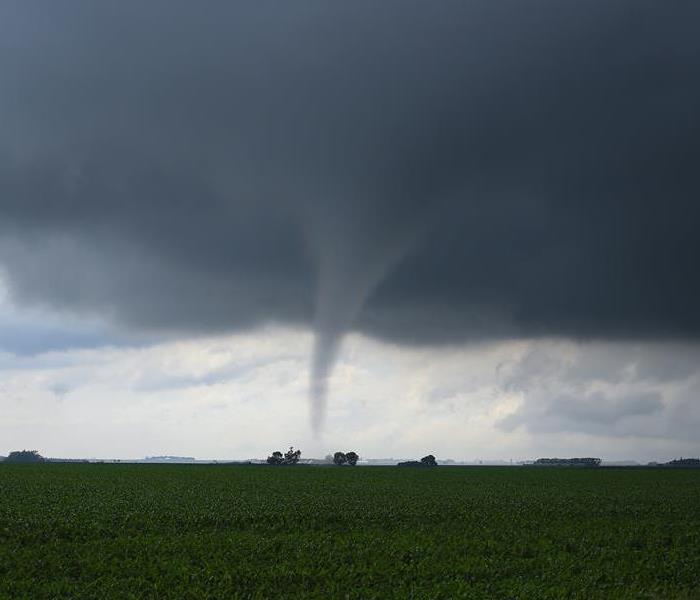 Being aware of storm damage that can occur after a natural disaster such as a tornado, high winds, or lightning strikes.
Being aware of storm damage that can occur after a natural disaster such as a tornado, high winds, or lightning strikes.
When we think of storm damage, our minds often envision torrential rain causing flooding and water damage. While this is indeed a significant concern during storms, it's important to recognize that storm damage can take many other forms as well. From high winds and falling trees to lightning strikes and hailstorms, storms can pose a range of hazards that can wreak havoc on properties. In this blog, we will explore the various types of storm damage beyond rain flooding, helping you better understand and prepare for the potential risks associated with severe weather.
High Winds
One of the most common and destructive aspects of storms is strong winds. These gusts can cause a wide range of damages, including:
- Roof Damage: High winds can lift and dislodge roof shingles, leading to leaks and structural vulnerabilities.
- Siding and Window Damage: Windborne debris can cause cracks, breaks, or even complete detachment of siding and windows.
- Falling Trees and Branches: Powerful winds can uproot trees or break branches, causing significant damage to buildings and surrounding structures.
Lightning Strikes
Lightning during storms can result in severe damage, including:
- Fire Hazards: Lightning strikes can cause fires, leading to devastating property damage.
- Electrical Surges: Power surges resulting from lightning strikes can damage electrical systems, appliances, and electronic devices.
- Hailstorms: Hail, a form of frozen precipitation, can cause substantial damage, such as:
- Roof Damage: Hailstones can puncture or dent roofs, leading to leaks and compromised structural integrity.
Exterior Damage
Siding, windows, and other exterior surfaces may suffer dents, cracks, or shattering due to hail impact after a storm. Vehicle damage from hailstorms can cause extensive damage to vehicles parked outdoors, including dented or shattered windshields and body panels.
Storm Surges
For properties located near coastal areas, storm surges pose a significant threat during hurricanes and tropical storms. These surges involve coastal flooding. In addition to rain flooding, storm surges can cause rapid and severe coastal flooding, leading to widespread property damage.
Tornadoes
In regions prone to tornadoes, these powerful vortexes can cause catastrophic damage, including complete destruction. Tornadoes can level buildings, leaving behind only debris. Tornadoes can cause structural damage and even weaker tornadoes can cause significant structural damage to roofs, walls, and foundations.
While rain flooding is often the primary concern during storms, it's crucial to be aware of the other types of storm damage that can occur. High winds, lightning strikes, hailstorms, storm surges, and tornadoes can all cause severe property damage and pose risks to occupants' safety. By understanding these different forms of storm damage, you can take appropriate measures to mitigate risks, such as reinforcing structures, securing outdoor items, and having emergency plans in place. Remember, comprehensive storm preparedness involves considering all potential hazards to ensure the safety and protection of your property and its occupants.
Mold Damage Tips: What to Do in an Emergency
5/15/2023 (Permalink)
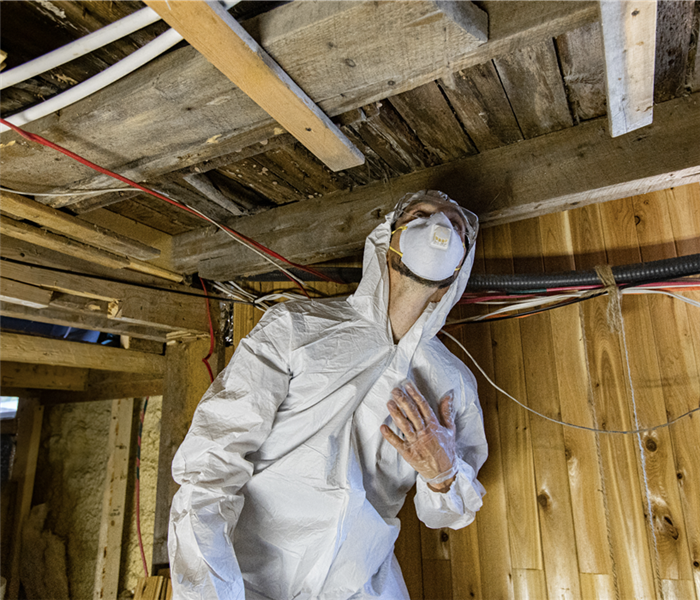 Mold damage is a serious problem that requires quick action to minimize the damage and prevent it from spreading.
Mold damage is a serious problem that requires quick action to minimize the damage and prevent it from spreading.
Mold damage is a serious problem that can cause extensive damage to your home and belongings. In addition to the physical damage, mold can also cause a musty odor that is difficult to remove. If you discover mold damage in your home, it's essential to take quick action to minimize the damage and prevent it from spreading. In this blog, we will discuss some tips on what to do in an emergency mold damage situation.
Stay Safe
When dealing with mold damage, it's important to stay safe and take necessary precautions. Wear appropriate personal protective equipment (PPE) such as gloves, goggles, and a respirator to prevent inhalation or contact with mold spores. Turn off the HVAC system to prevent the spread of mold spores and seal off the affected area to prevent the spores from spreading to other parts of the house. Be cautious when handling moldy materials, and avoid disturbing the mold to prevent further damage or spreading.
Identify the Source
Mold thrives in moist environments, so the first step in preventing mold damage is to identify the source of the moisture. Check for leaks or water damage in the affected area, and fix any problems as soon as possible. If you're unable to identify the source of the moisture, a professional restoration company, like SERVPRO of South Baton Rouge, can assist you in identifying and fixing the issue.
Dry the Affected Area
Once you've identified the source of the moisture, it's essential to dry the affected area as soon as possible. Mold can start to grow in as little as 24-48 hours, so it's important to act quickly. Use fans or a dehumidifier to dry the area, and if necessary, remove any standing water or wet materials. A professional restoration company has specialized equipment to dry and dehumidify the affected area thoroughly.
Clean the Affected Area
After the affected area is dry, it's essential to clean it thoroughly. Use a mixture of water and detergent to clean the affected area, and scrub any visible mold growth. It's important to remember that bleach is not an effective mold cleaner, and it can actually make the problem worse. A professional restoration company has specialized equipment and cleaning agents to remove mold thoroughly.
Dispose of Damaged Materials
If any materials are severely damaged by mold, such as drywall or carpeting, it's important to dispose of them properly. Do not attempt to remove or clean severely damaged materials, as this can spread mold spores and exacerbate the problem. A professional restoration company can safely remove and dispose of any damaged materials.
In conclusion, mold damage is a serious problem that requires quick action to minimize the damage and prevent it from spreading. If you discover mold damage in your home, it's important to stay safe, identify the source of the moisture, dry the affected area, clean it thoroughly, and dispose of any severely damaged materials. A professional restoration company like SERVPRO of South Baton Rouge has the expertise and specialized equipment to handle mold damage emergencies safely and effectively.
7 Essential Tips for Preventing Residential Fires
4/18/2023 (Permalink)
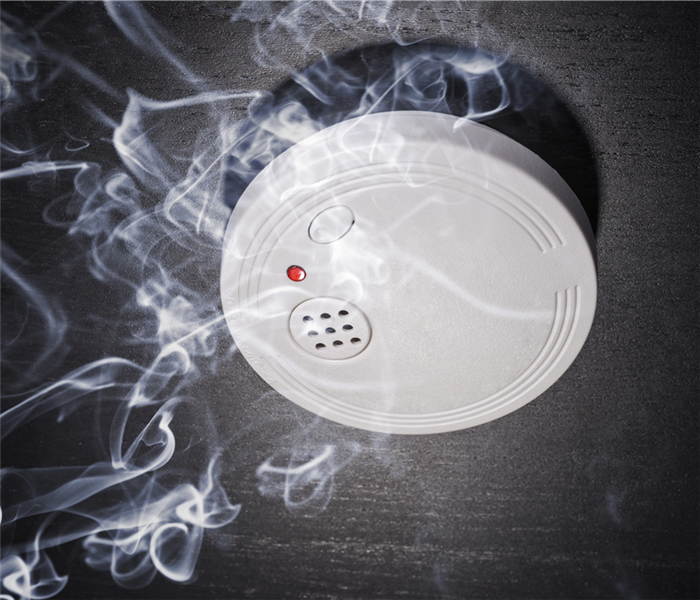 Smoke alarms are essential in detecting a fire early and giving you enough time to evacuate.
Smoke alarms are essential in detecting a fire early and giving you enough time to evacuate.
A residential fire can be devastating, causing damage to your property and putting your family's safety at risk. However, many residential fires are preventable with the right precautions and awareness. Here are some tips on how to prevent a residential fire:
1. Install smoke alarms and test them regularly.
Smoke alarms are essential in detecting a fire early and giving you enough time to evacuate. It is recommended that you install smoke alarms in every room of your house and test them at least once a month to ensure that they are working properly. If you have trouble hearing the alarm, consider installing one with a strobe light or a vibration feature.
2. Avoid overloading electrical outlets and circuits.
Overloading electrical outlets and circuits can cause a short circuit, leading to a fire. Make sure that you are not plugging too many appliances into one outlet or using extension cords in place of additional outlets. If you find that you need more outlets, consider hiring an electrician to install additional ones.
3. Keep flammable materials away from heat sources.
Flammable materials such as curtains, blankets, and papers should be kept away from heat sources such as stoves, heaters, and fireplaces. A good rule of thumb is to keep a distance of at least three feet between any flammable materials and a heat source.
4. Practice safe cooking habits.
Cooking is one of the leading causes of residential fires. To prevent fires while cooking, never leave the kitchen unattended while cooking on the stove. Also, keep flammable materials such as towels and paper products away from the stove. If a fire does break out while cooking, use a fire extinguisher or baking soda to put it out rather than water, which can spread the flames.
5. Don't leave candles unattended.
Candles can create a cozy atmosphere, but they can also be dangerous if left unattended. Always blow out candles before leaving the room or going to bed, and keep them away from flammable materials. Consider using flameless candles as a safer alternative.
6. Have a fire escape plan.
In case of a fire, it is important to have a plan in place for how to escape safely. Make sure that everyone in your household knows the plan and has practiced it. Identify two ways to escape from each room in the house and establish a designated meeting place outside.
7. Keep a fire extinguisher in your home.
A fire extinguisher can be a useful tool in putting out small fires before they become larger ones. Make sure that you have a fire extinguisher in your home and that you know how to use it. Check the expiration date on the extinguisher and replace it if necessary.
By following these tips, you can significantly reduce the risk of a residential fire. Remember that prevention is key, and taking the necessary precautions can keep your family and your home safe.
Who To Call After A Water Damage Event Occurs
3/18/2023 (Permalink)
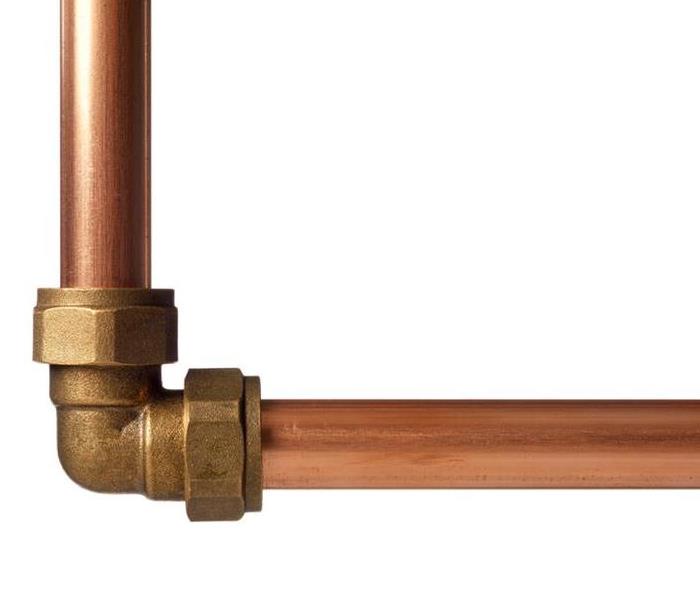 When water damage occurs, give SERVPRO a call!
When water damage occurs, give SERVPRO a call!
Water damage can be a scary situation to deal with. Whether your home or business has been flooded by a burst pipe, a storm caused flooding in your home, or your toilet clogged and overflowed...the resulting damage can be devastating. You don't have to panic though! Just follow these simple steps and you'll be back on track in no time.
Who to Call After Water Damage
Water damage can be stressful, but knowing who to call after water damage occurs can make all the difference in the world.
If you have homeowners insurance, call your insurance company first. They'll direct you on what steps need to be taken next and how they will handle any expenses related to removing moisture from your home or business.
Your next call should be to a water damage restoration company. This is the company that will actually clean and restore your property after a water loss. They will make sure that everything is being taken care of properly by trained professionals.
Insurance Company
If you are insured, the first thing you should do is contact your insurance company. They will tell you if there is coverage for water damage in your home or business and what steps to take next. Once they have determined that the damage is covered by an insurance policy, they will send a claims adjuster out to assess the situation and determine how much money it will cost to fix it.
Water Damage Restoration Company
Water damage restoration companies are experts in the field of water damage restoration. They have years of experience and training, and they know exactly what to do when your home or business suffers from this kind of damage.
They can help you with the entire process, from water removal to cleaning to repairs--saving you time and money. Most companies, such as SERVPRO, will also work with your insurance company to process your claim, ensuring that they receive the proper documentation and repair estimates. They will take care of the claims process for you from start to finish.
Why SERVPRO?
SERVPRO of South Baton Rouge is the leading provider of fire and water damage restoration services in Baton Rouge, LA. Our highly trained technicians respond quickly to your emergency, performing a thorough inspection and damage assessment, followed by water removal, drying, and restoration.
We are dedicated to restoring your property back to preloss condition as quickly as possible while being respectful of you and your family's needs during this stressful time. Our goal is to help families get their lives back on track by returning them back to their homes or businesses with minimal impact on daily routine activities.
It's important to know who to call if a water damage situation occurs in your home or business. It's also important that you choose the right company for the job! SERVPRO of South Baton Rouge is always on standby and ready to respond to your water damage emergency.
What Do I Do If My House Floods?
2/22/2023 (Permalink)
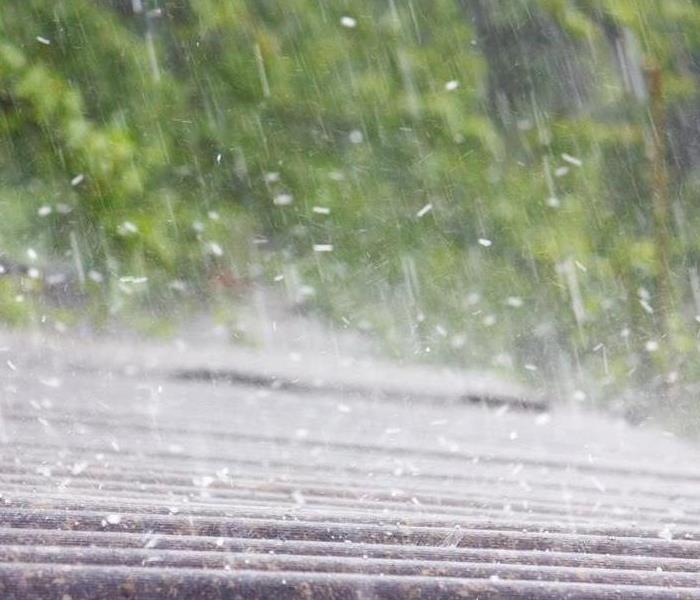 When your property suffers damage from a storm, we are here to help!
When your property suffers damage from a storm, we are here to help!
Rain and flooding can be a huge pain and it's not fun to find out that your house has been flooded. It can take weeks or even several months to get it fixed. But there are things you can do immediately after a flood that will help mitigate the damage as much as possible, and they'll make the process of cleaning up easier in the long run.
Turn off the electricity.
If your house floods, turn off the electricity. If you have a generator, make sure it's not running on gasoline or propane. If it is, turn it off as well.
If there is no power in your home and water levels are rising, unplug all electrical items and appliances that can be moved. You'll also want to remove any computers or televisions as well—they don't need electricity to conduct damage!
Turn off the water supply.
If you can, turn off the water supply. If you can't find the main water valve, turn off the water supply to the house. If it's a flooding emergency, you're not thinking rationally, so don't worry about what's going to happen later when it comes time for repairs. You need to make sure that there is no running water anywhere in your home while you start working on cleaning up and drying out everything that got wet.
Evacuate.
As soon as you realize your house has flooded, the most important thing to do is to evacuate. If you have time, grab any valuables from your home, such as important documents. If not, leave those items behind and go directly to a safe place.
Take any pets with you when evacuating. This will ensure they're cared for while also keeping them away from danger until help arrives.
Document everything.
When you’re dealing with a flood, you should document the damage as soon as possible. Take pictures of things that need to be replaced or repaired, then call your insurance company and make sure they know about it.
Take pictures of the damage. Take pictures of the flood. Take pictures of the water level. Take pictures of all the damage done to your property.
Be sure to include as much detail as possible in your photos, including items that have been damaged and their current condition (i.e., if they are wet or dry). Also, make sure to take multiple shots from different angles so that your insurer can see everything clearly when reviewing them later on.
It's important to let your insurance company know what happened as soon as possible so that they can begin assessing the damage and make sure you're protected.
Begin the mitigation and restoration process immediately.
The first thing you should do after your house floods is to begin the mitigation and restoration process immediately. This means removing all damaged items, cleaning up the mess, and removing any mold that may have formed in your home.
As soon as possible, dry out your house by turning on fans to circulate air throughout the structure and open windows where possible (make sure it's safe first).
Next, repair damage to your house caused by flooding—and replace any belongings or furniture that were destroyed by water damage or mold.
Lastly, restore your home back to its original condition so no one will know what happened there before it gets flooded again!
A flooded house is a big deal. It can be dangerous and a pain to fix, but with some time and hard work, there are things you can do to make it better. If your house floods, turn off the electricity and water supply immediately. Then evacuate the premises until professionals arrive to clean it up or take pictures of any damage caused by the flood. SERVPRO of South Baton Rouge is always here to help with all your flood damage cleanup and restoration needs!
What Is The Difference Between Mold Remediation and Mold Removal?
1/10/2023 (Permalink)
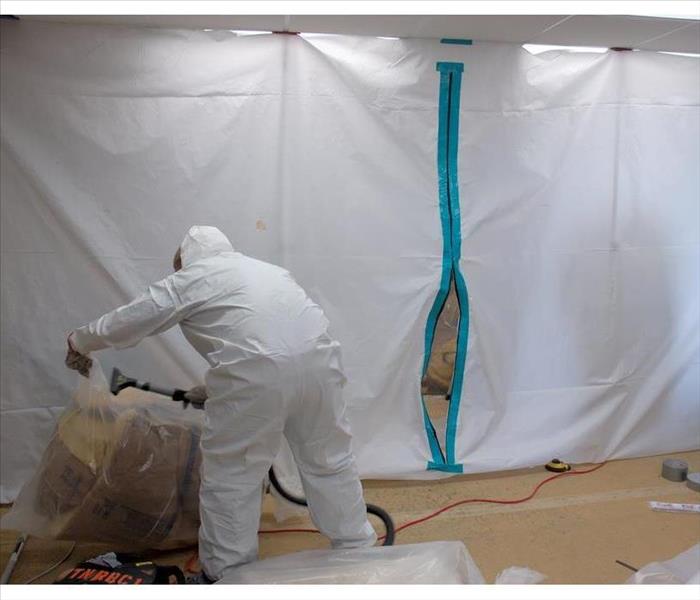 When it comes to mold remediation, containment is the first step.
When it comes to mold remediation, containment is the first step.
Mold remediation and mold removal are two terms that homeowners and renters may hear when there is a problem with mold in their home or apartment. While both terms refer to cleaning up an existing mold problem, these solutions differ significantly in how they are applied. It’s important to understand this difference in order to know what kind of work is required for removing the mold.
Water Damage and Mold Damage go Hand-In-Hand
Mold damage is a result of water damage. In other words, if there were no water involved in the first place, there would be nothing to worry about when it comes to mold growth.
It’s important that you know whether or not your home has been damaged by water (and by extension, mold) before you begin any remediation process on your own.
What is Mold Remediation?
Mold remediation is the process of removing mold from a building or structure. Mold remediation is not the same as mold removal, which involves ridding an area of all traces of the fungus.
Mold remediation entails ridding a space of mold-damaged materials and areas that have been affected by mold growth, while also addressing water leaks or moisture problems that may have contributed to the problem in the first place.
What is Mold Removal?
Mold Removal refers to the process of removing mold from a surface, usually a non-porous and semi-porous material. It also includes the removal of mold from an object. Mold removal does not include the removal of materials such as carpets, insulation, or drywall.
What is the Difference Between Mold Remediation and Mold Removal?
Mold remediation and mold removal are both processes designed to get rid of mold and the materials that have been contaminated with it.
Mold removal is a cleaning process, while mold remediation involves both a cleaning process and the disposal of contaminated items.
Containment is Essential to Mold Remediation
When it comes to mold remediation, containment is the first step. Without proper containment of a mold-infested area, subsequent steps in the mold remediation process will be ineffective. In fact, failing to isolate and contain the affected area can actually make matters worse by increasing the hazard to your home or business.
Why does containment matter in mold remediation? The answer lies in how mold spreads: through microscopic spores that are released into the air when you disturb contaminated materials. Containment helps prevent these spores from spreading further into other areas of your home or office building by preventing them from getting out into other parts of your living space or workspace.
Clean and Protect Areas Not Affected by Mold
Once you've cleaned up the mold and removed it from your home, you'll need to protect areas not affected by mold. It's also important to clean and disinfect these areas. This can be done using a disinfectant spray, wipes, or solutions.
You may want to consider using an aerosol spray bottle for clean-up if it's available at your local hardware store or online retailer. Aerosol cleaners provide ease of use because they're readily available and require no mixing of ingredients before application on surfaces in order to get the job done quickly!
Mold removal is the process of cleaning up the mold from your home or business. Mold remediation, on the other hand, is a more involved process that involves removing all traces of mold growth from an area and ensuring it does not come back. By knowing what type of work needs to be done in order for your property to be safe again, you will know whether or not hiring a professional company like ours makes sense for you!
After the Fire – A Comprehensive Post-House Fire Checklist
12/29/2022 (Permalink)
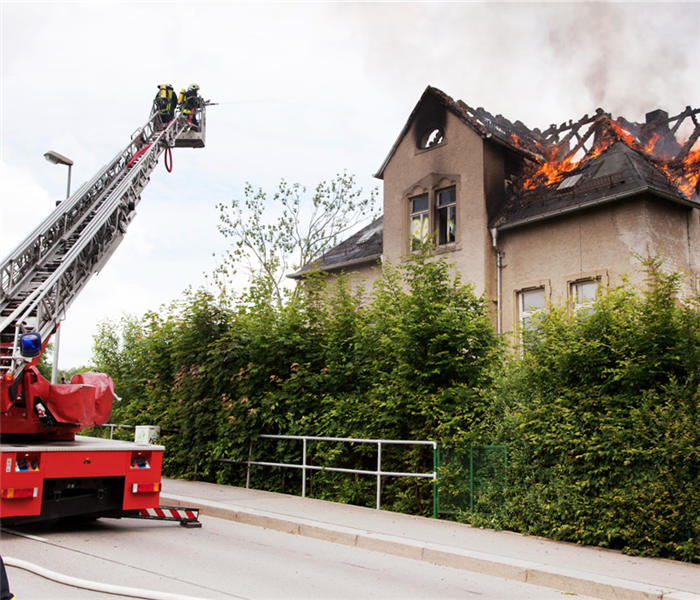 Fire damage in Baton Rouge, LA
Fire damage in Baton Rouge, LA
Suffering a house fire is one of the most devastating events a homeowner can experience. The loss of personal belongings and cherished keepsakes often leaves survivors feeling completely helpless. Thankfully, there are steps you can take to protect your property after experiencing a house fire. This comprehensive guide will walk you through everything from getting control over your insurance benefits and securing the perimeter of your home with board-up services to assessing damages and dealing with insurance claims adjusters.
Steps to Take Immediately Following a Fire
The moment your house catches on fire, you’ll be in a state of shock. You may not even know what to do first. Thankfully, there are a few steps you can take right away to ensure that everyone is safe and that the damage done by the fire is minimal.
First and foremost, call 911 as soon as possible. The sooner first responders are at your location, the sooner they can assess what’s happening and get control over it—or if necessary, help evacuate everyone from the building safely. Once they arrive on scene, they will direct you through each step needed for them to extinguish the flames and make sure that no one is left inside or exposed to hazardous chemicals/emissions such as carbon monoxide poisoning (see below).
Assess the Damage
The first thing you should do after a fire is assess the damage. This can be overwhelming, but it's important that you know exactly what you're looking for so that you can make an educated decision about where to go from there.
- Look for structural damage and stability. Structural damage refers to any changes in the physical structure of your home that occurred as a result of the fire. You'll want to inspect walls and floors, windows and doors, roofing materials, ceiling beams and supports (if possible), plumbing systems, electrical wiring/outlets/switches—everything!
- Check for smoke or water damage. Even if no flames were visible during the fire itself (or even if they weren't even suspected), there may still have been smoke damage hidden inside walls or ceilings. This means having an expert come in with specialized equipment like thermal imaging cameras, so they can determine whether there was enough heat generated that could potentially cause structural integrity issues down the road.
Back-Track to the Source
After the fire has been extinguished, you may be eager to see what happened and how much damage has been done. It’s important to back-track to the source of the fire so that you can prevent another one from happening.
- Investigate the cause of the fire: If it was an electrical issue, find out if there are any other problems in your home that could lead to another fire.
- Check for hazardous materials: If it wasn’t an electrical issue, check for any other possible causes like flammable liquids or gas leaks around your house. Also look at all of your belongings and make sure they aren’t leaking anything dangerous onto surfaces where they might ignite a new fire later on – this includes cleaning products!
Gather Valuable Documents and Information
One of the most important steps you can take after a house fire is to gather all of your valuable documents and information. This includes copies of birth certificates, marriage licenses and divorce decrees, Social Security cards (and numbers), passports and immigration papers, wills, deeds to real estate—anything that may be necessary for insurance companies or creditors to prove ownership of property.
Once you’ve begun rebuilding your life after the fire, it’s important that these documents are stored safely in case they are needed later on. Some people choose to use an online cloud service like Dropbox or Google Drive; others prefer using a hard drive or flash drive. The choice is up to you!
Evaluate Your Insurance Benefits and Plan Ahead
After the fire, it’s important to collect your insurance information and determine the amount of coverage you have. In addition to making a list of what is covered and what isn't, you should also ask about any exclusions or limitations on your policy. Your insurance company may be able to help you get an estimate for repair costs.
Make a List of Damaged Items
Once the fire is out, you will have time to make a list of damaged items and the rooms they were located in. You should also note how much damage was done to each item. This will be helpful when it comes time to file an insurance claim and replace your belongings.
If firefighters were able to recover any of your possessions, it's important to check with your insurance company to see if they can help you with a claim. Your policy may cover items that were damaged but not destroyed in the fire. If so, you may be able to recover those belongings from the insurance company and donate them to a charity organization that can use them for good.
Securing Your Home with Board-Up Services
After you and your family have safely returned to your home following a devastating house fire, it is important to take steps to secure the perimeter of your home and protect yourself from intruders. If you are not able to secure the perimeter of your home, either by yourself or with help from a board-up company, you may find that strangers enter your property and steal items. This can be especially dangerous for homeowners who have lost their homes in fires because they will likely have minimal possessions left after such an event.
If you’ve been the victim of a house fire, the last thing you want to do is feel like you are alone in this difficult time. A professional fire restoration company, like SERVPRO of South Baton Rouge will be there for you every step of the way. We understand what it means to go through something like this and we want to help ease some of your stress. If at any time during the process, you have questions about getting back on your feet again or just need someone else who understands what it’s like – don’t hesitate to reach out! We will get your Baton Rouge, LA home back to normal as quickly as possible.
How To Flush a Water Heater?
11/15/2022 (Permalink)
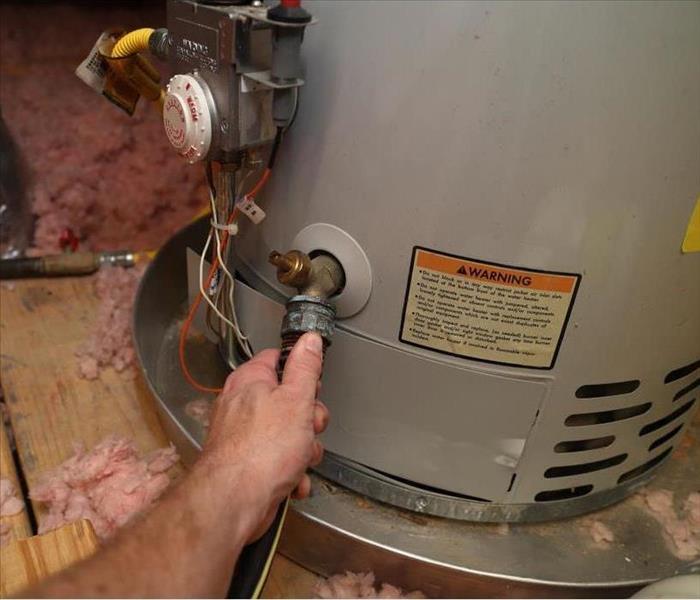 Flushing your water heater is a simple procedure that you can perform yourself
Flushing your water heater is a simple procedure that you can perform yourself
How Should a Water Heater Be Flushed?
If you've ever come home and found your water heater leaking, it's likely because something went wrong with the tank. Water heaters are designed to last for years, but they're not immune to problems. A clogged drain line can cause a tank to overflow or leak into your basement. If there's sediment buildup in either the tank or piping (or both), those components will eventually stop working properly due to rusting and mineral deposits that cause corrosion. How do you flush out all that crud? Follow these steps:
Turn off the water and power
Whether you're an experienced DIYer or hiring a professional, it's important to turn off the water and power to your water heater before beginning any work. If you don't know how to do this, enlisting the help of someone who does is always a good idea.
Drain the water heater
If you've never done this before, it can be a little intimidating. But it's actually pretty easy to drain the water heater. All you have to do is find the drain valve (it'll be on the bottom of your water heater) and use a hose to drain out all of that old water.
Attach a hose to the drain valve
Once you've found the drain valve, attach a hose to it using a garden hose. Make sure that the other end of the hose goes somewhere safe: either outside or down a hole where it won't get clogged with dirt.
Open the drain valve
Flushing a water heater is much like flushing any other plumbing fixture in that you need to open the drain valve and then use some sort of hose or faucet to drain the tank. That said, some water heaters don't have a drain valve, so it's important to know how your system works ahead of time. This will effectively flush out most remaining sediment particles.
- Use a plunger
- Remove the fill cap and pour water into the tank until it's full again
Close the drain valve and refill the tank
Make sure to close the drain valve before turning on the power and water again. If you don't close it, your water heater will not be able to refill. Once the water is on, your heater will begin to refill with water. This process can take hours, so be patient!
How often should I flush my water heater?
Flushing your water heater is a simple procedure that you can perform yourself. It's important to flush your water heater regularly, as the buildup of rust and sediment can lead to breakdowns and prevent it from working properly.
The frequency with which you should flush your hot water tank depends on many factors, such as how much sediment is present in your water supply, what kind of filters are installed on the tank (if any), and how old/new the unit is. As a general rule: if you have hard water that hasn't been treated yet or if there are no filters installed on your hot-water tank then flushing should be done every 6 months; otherwise, flushing should be done once per year.
Hopefully, this article has helped you understand how to flush your water heater. If you're still unsure about what to do with your tank, contact a professional plumber. They'll know exactly how much water you need to drain and will have all the necessary tools for cleaning and flushing.
How Do I File an Insurance Claim After a Fire?
10/16/2022 (Permalink)
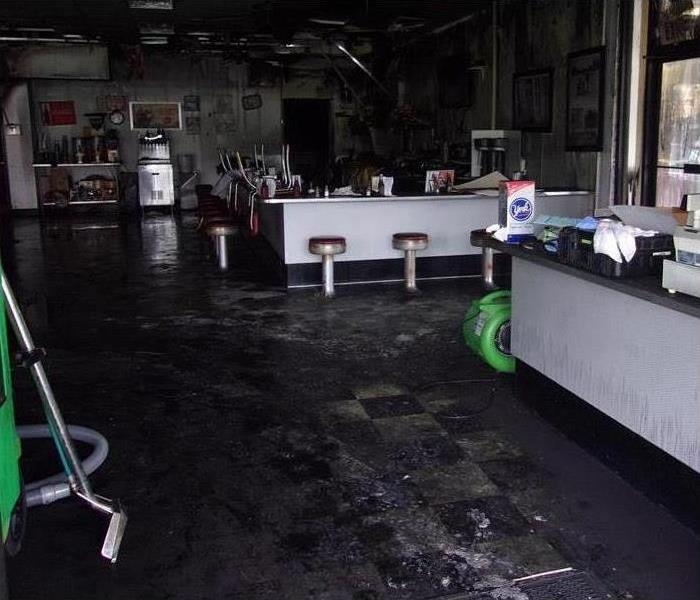 Fire damage in Baton Rouge, LA.
Fire damage in Baton Rouge, LA.
What To Do In the Aftermath Of a Fire
Have you ever wondered what to do after a fire? Unfortunately, fires happen, and most people aren't prepared for the financial impact. Fortunately, it's not as difficult as it seems to claim damages from your insurance company. Here's how to get started with filing a claim after a fire:
Contact your insurance agent
In the wake of a fire, you’re likely to be frazzled. Your first step should be to contact your insurance agent and provide them with as much information about what has happened as possible. If you have an agent already but do not know who it is, try calling your local insurance agency or company and ask for their assistance.
The next steps will depend on how bad the damage is in each room of your Baton Rouge home. For example, if only one room is affected by smoke damage and there are no structural damages (meaning that nothing can fall or collapse), then this may be covered under basic homeowner's coverage. However, if several rooms were burned through completely or there are signs of water damage nearby due to hoses being used during cleanup efforts (which could lead to mold growth), then those kinds of claims would have to go through an additional detailed process before they can move forward with repairs
Document the Damage
- Photographs are the most important part of this process. Make sure you take photos of all areas that were damaged by the fire, including walls, floors, and ceilings.
- Make a list of all damaged items with their original purchase date and price. Then keep receipts for any expenses related to your claim such as temporary living arrangements or repairs. You can keep these in one folder for easy access when submitting your claim to your insurance company.
- Keep copies of any police reports that show how much damage was caused by the fire and who was responsible for it (if applicable).
Know What's Covered
Before you file a claim, make sure you know what's covered and what isn't:
- Check your policy. Your insurance company may only cover damage to the building or home itself, but not any other structures on the property (like fences or sheds). If you need to repair these items, check with your insurance company first to see if they're covered by your policy.
- Check your deductible. Once again—your deductible is an amount of money that you pay before they start paying out anything at all. For example, let's say someone breaks their leg in an accident involving something that was previously insured by their house's owners association (HOA). The HOA can go after either party for damages incurred as part of their policies; if so, it will be determined later whether or not there was negligence involved on either side and how much each party would owe based on whatever had been agreed upon beforehand via contract law (or lack thereof).
Claiming damage from a fire is like other insurance claims, but you should work with a professional restoration company.
Fire damage is different from other types of damage, and the process of claiming it can be complicated. If you decide to claim on your insurance for fire damage yourself, there are many pitfalls that you should avoid. You should work with a professional restoration company so they can make sure everything is done right and you get the money that's rightfully yours. Some professional restoration companies, such as SERVPRO of South Baton Rouge, can take care of the whole insurances claims process for you.
When a fire damages property, it's not just physical damage that needs to be repaired: There may also be smoke or water damage as well as structural issues in addition to cosmetic ones (such as smoke stains). It's important that these areas are restored correctly so they don't cause problems down the road or become more expensive than necessary. With specialized training and equipment specifically designed for this type of work, professional restoration companies have everything they need to make sure properties receive thorough care when recovering from fires—and this makes hiring them worthwhile even if their rates seem high at first glance!
In conclusion, it's important to know what your insurance covers and how much coverage you have. If you're in doubt, speak with an agent to make sure that you're covered for fire damage.
Tips for Creating a Home Fire Escape Plan
8/29/2022 (Permalink)
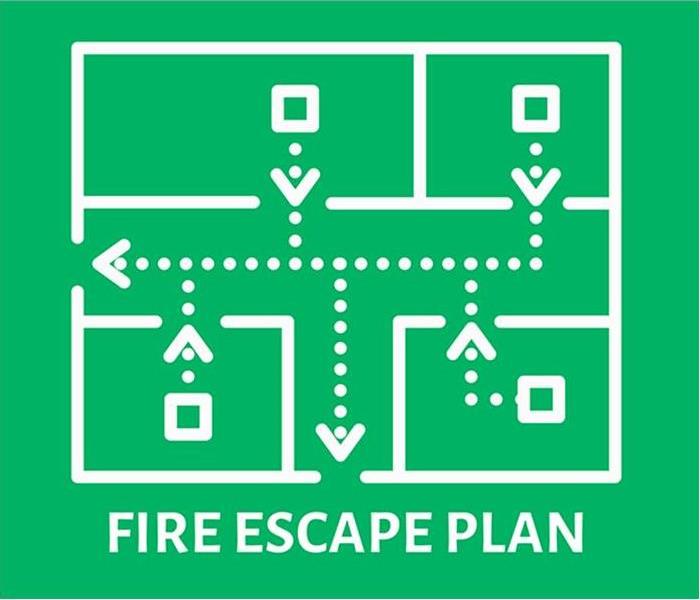 Create a fire escape plan for your home
Create a fire escape plan for your home
During a home fire, you may only have minutes to escape your Gardere, LA, property. You and your loved ones will not have time to figure out a fire escape plan. That is why you need to come up with a fire preparation strategy ahead of time.
Making Your Plan
Involve every member of your household in the planning process. Each person should know the locations of the smoke alarms and the windows and doors.
Next, pick a meeting place outside of your home. This way, everyone will know where to go after leaving the house. Common meeting places include:
- Stop signs
- Light posts
- Mailboxes
- Neighbors' homes
Any security bars on your windows and doors may make it hard for family members to exit the home quickly. As you create your fire escape plan, make sure the bars have emergency release devices.
Finally, have every person in your house memorize the phone numbers for your local fire department and emergency restoration company. That way, someone will be able to contact these professionals from safely outside the home.
Practicing Your Plan
You should practice your escape plan twice each year. This will let you see if there are any faults in your strategy and give you time to correct them.
As each person exits the house during the drill, he or she should practice closing the doors behind them. This can slow the spread of a real fire. If you have an escape ladder, every member of the home should practice locating and using it.
You should also practice a scenario where you or a loved one are trapped in the home due to smoke or fire. In this scenario, you should seal yourself into a room by closing the door and covering and vents or door cracks.
A blaze in your home can be a scary situation. However, having a fire escape plan in place should help everyone keep calm during an emergency.
Why Choose a Certified Drying Specialist?
8/20/2022 (Permalink)
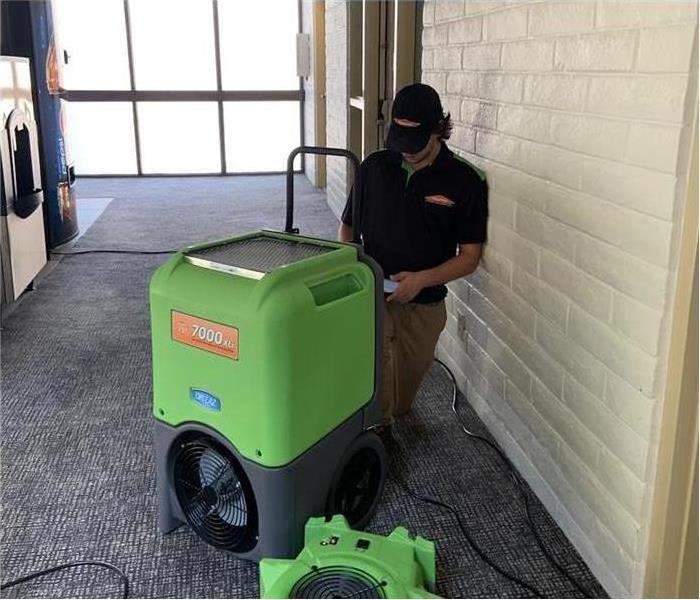 Drying commercial services in Arlington, LA
Drying commercial services in Arlington, LA
Why Go with a Certified Drying Expert?
If your Arlington, LA, business has experienced flooding, leaks or other water damage, you will likely need to hire professionals for the water clean up. Choosing a certified restoration service gives you peace of mind that the job is done correctly.
Certification
The Institute of Inspection Cleaning and Restoration is a global leader with almost 50 years of experience in setting standards and providing training to restoration professionals. In addition to creating standards in other restoration areas, the IICRC offers certification in commercial drying. The IICRC certification ensures that restoration teams are up-to-date on the following:
- Technology
- Equipment
- Techniques
- Project management
The IICRC standards are developed by industry leaders and rigorously tested to ensure they reflect the restoration industry's best practices. You can trust that an IICRC-certified restoration team will perform complex commercial jobs efficiently and thoroughly.
Restoration
The IICRC standards go into great detail about the water clean up process, but the general steps are the same for most restoration jobs. The source of the water is addressed as quickly as possible to prevent further damage. The damage is then documented via photo or video for the insurance company. Standing water is extracted using pumps or wet/dry vacuums, and the remaining moisture is dried using fans and dehumidifiers. Cleaning, sanitization and mold removal are done as needed. Documents, antiques, electronics and other items may be moved off site for more delicate restoration techniques. Everything that cannot be fully cleaned and dried is removed from the property. Finally, all damaged items are repaired or replaced.
Whether your commercial building has experienced a roof leak, broken pipe, flooding or other water event, beginning the water clean up process as soon as possible can prevent further structural damage and mold growth. Bringing in an IICRC-certified restoration team in ensures that the job is done is properly and professionally, so you can focus on your customers, employees and other business matters.
What To Do if You Find Mold in Your Rental Home
8/15/2022 (Permalink)
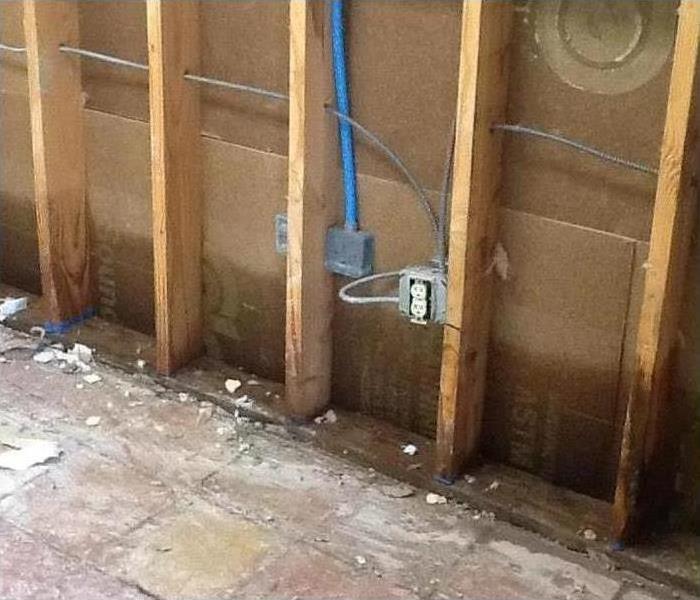 Black barrier mold
Black barrier mold
How to Handle Mold in a Rental Property
Mold spores are everywhere and are harmless when they're floating around, but the trouble comes when they take up residence in your apartment or rental home in Gardere, LA. Whether it's in your bathroom or around your windows, mold can pop up wherever moisture is. As a tenant, here are some things to do when you discover mold contamination in your home.
1. Appraise the Situation
Before you do anything, take a closer look to make sure the substance you're seeing is actually mold and not dirt or mildew. If it's mildew, which looks fluffy or powdery and is usually gray, white or yellow, it is easy to clean off. If you determine that the substance is mold, try to find the source of the moisture it's feeding on. If it's around your shower or windows, that's a pretty obvious reason why it might be there, but if it's on your walls, there might be a pipe leaking, requiring some more intense water and mold cleanup.
2. Contact Your Landlord
If you've determined that there needs to be some action taken, call your landlord. Send them pictures of the mold and explain what's happening. Since mold is usually tied to a water problem, they'll want to respond quickly. When you do this, though, don't assume that they'll automatically take care of the cost of the mold cleanup. If the source is a leaky pipe that is outside of your control, it's usually their responsibility, but if you caused a flood or haven't been ventilating the bathroom properly when you shower, it's often your job to cover the expenses. If you think the mold contamination may be your fault, talk with your renter's insurance about what they'll cover and what they won't.
Mold is a common issue in homes, but it's important that you respond quickly if you think you've found some in yours. This keeps the mold cleanup process from becoming bigger and more costly than it needs to be.
3 Reasons Protecting Wood From Water Is Vital To Its Lifespan
7/30/2022 (Permalink)
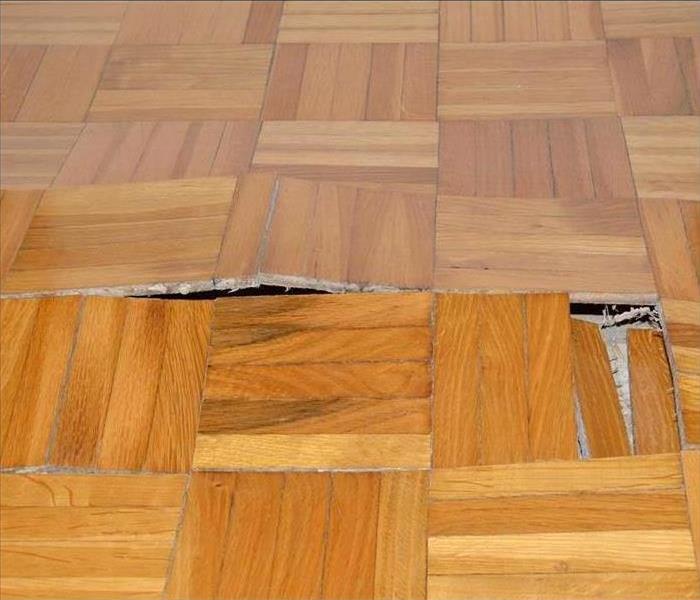 Wooden floor damaged by water.
Wooden floor damaged by water.
Three Reasons To Protect Wood From Water
One of the biggest threats to the longevity of wood is water. Wood continuously absorbs and expels water, a process that eventually degrades the integrity of the material to the point that it is no longer usable. Especially in humid and rainy regions, swelling wood can be a persistent problem that is of utmost importance to address to extend the life of wooden constructions.
1. Contraction and Expansion Damages Wood
Swelling and shrinkage in wood are driven by moisture. Years of water absorption and expulsion weaken the integrity of the fibrous cell walls that make the material rigid. This leads to fragility and cracking, which not only causes breakage but increases the likelihood of decay. Minimizing the amount of water absorbed is key to prolonging the life of wood, making it vital to keep it sealed with paint or finishes like urethane.
2. Variation in Swelling Wood Rates Affect the Integrity of Structures
The speed of swelling and shrinking varies in each individual piece of wood. Uneven rates of swelling or shrinking can not only cause distortion or warping in an individual chunk but can also cause joint problems in the frame of a house or a piece of furniture. Protecting wood with paint or finish thus helps slow the distortion at the joints, increasing the longevity of wooden structures.
3. Keeping It Dry Is Protection, Too
Interior wood (studs, joists, etc.), although not exposed to the elements and hence often left unprotected, still requires vigilant upkeep. Exposure to water from a ruptured supply line or a leak from a water pipe repair can lead to swelling problems if left unaddressed. The life of even this unprotected wood can be prolonged simply by ensuring that any damp parts are allowed to dry and are kept dry.
In most cases, the effects of swelling wood can be mitigated by keeping a watchful eye on the paint or finish that protects it. Hiring the services of protection and restoration professionals is also a good way to ensure that homeowners in Baton Rouge, LA, get the most out of their wood.
4 Plans To Include Within Your Business Disaster Plan
7/20/2022 (Permalink)
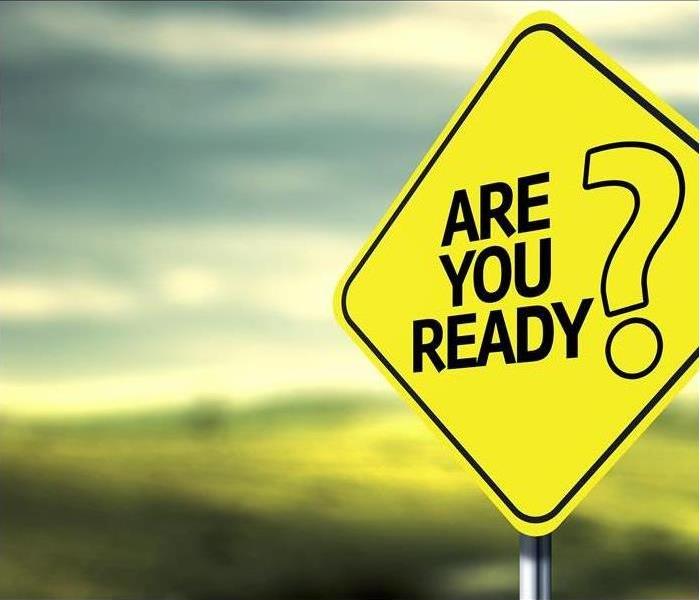 Are you prepared?
Are you prepared?
Are You Prepared?
Are you prepared for the possible disasters that could happen to your business in Arlington, LA? Ready your facility and employees with these four plans for disaster preparedness.
1. An Involvement Plan
A key component of business preparedness is getting your employees involved. By creating a diverse planning team, you can address employee needs and have a clear plan for getting everyone to safety. The co-workers you choose should also be ready in emergency situations. They know the plan best, so they will be crucial to helping others during an emergency.
2. An Evacuation Plan
Getting everyone out of your facility safely means ensuring that your employees know your evacuation plan inside and out. To prepare them, you need to give them the information they need. Create detailed maps with evacuation routes, locations of safety equipment and assembly places. Post them in high traffic areas such as elevator corridors. Review your plans frequently to make sure they are understood. Conduct drills to give your employees confidence if a real emergency happens.
3. A Shelter-In-Place Plan
Certain emergencies might call for you to stay indoors. “Shelter-In-Place” plans need to consider how to keep your employees safe within your facility. These include tornado warning and air-quality contamination emergencies. Create a diagram of your building for each possible scenario and designate rooms for your employees to go to for each situation.
4. A Post-Disaster Plan
Disaster preparedness includes having a plan for when the emergency is over. Have a list of emergency contacts prepared. Create a communication network to check on employees and relay any important information they will need going forward. Develop a plan to continue servicing your most valued customers. This way, you can continue to work while commercial restoration services get your facility up and operating at full capacity.
Disaster preparedness is a business owner’s responsibility, but by including your employees in your preparation, you will be more prepared for an emergency.
How To File a Fire Claim for Your Business
7/13/2022 (Permalink)
 Contact a restoration company if you would like further clarification on the claims.
Contact a restoration company if you would like further clarification on the claims.
Four Steps To File a Fire Claim
A fire is about the worst thing any business owner can experience. However, the important thing after any disaster is staying calm and restoring your business. In order to get back to business as usual, you may need to hire a fire restoration company in Gardere, LA, but before you do that, you will need to file a fire claim with your insurance company, which typically involves four steps:
1. Call Your Insurer
Before getting your fire restoration underway, call your insurer and report the disaster. While you may have millions of things going through your head after the disaster, contacting your insurance agent is crucial to getting the recovery process started.
2. Mitigate Further Loss
If you want your fire claim to be approved, then make sure you take efforts to mitigate any further loss. An insurer may cover the damage caused by the fire, but if any preventable damage occurs after the fire, then you are responsible.
3. Gather Proof of Loss
You can help move the recovery process along if you document any fire damage. An insurance adjuster will want evidence of lost or damaged property, so by photographing everything and labeling it, you can help the adjuster with a proof of loss statement.
4. Collect Receipts
Receipts help your insurance company determine the value of the claim. You want to prove the financial loss. If you have receipts from equipment purchases and repairs you made, make sure that those are organized and with the rest of the claim forms for review.
A fire claim is like any other insurance claim, but the process can feel a little direr depending on the level of devastation. By organizing receipts and documenting the scene, you can help move the claims process along. You can also contact a restoration company if you would like further clarification on the claims and recovery processes.
3 Risks of Driving Through Flood Water
6/26/2022 (Permalink)
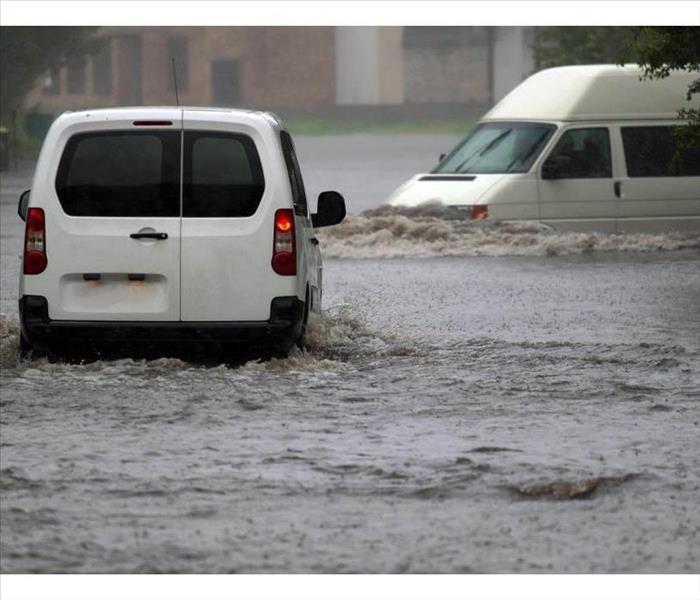 Avoid driving through a flooded street.
Avoid driving through a flooded street.
Driving Through Flood Water Poses Three Dangers
Many of us wouldn’t think twice about driving through a flooded street. After all, what harm can a little H2O do? Fact is, it can do much more damage than you think. Not convinced? Here are a few more reasons why driving through flood water in Baton Rouge, LA, is never a good idea.
About Flood Water
Flash floods are common in areas that are low-lying, but they can happen anywhere that rapid rainfall accumulates. If you doubt the power of flood water, understand that
- It takes just a foot of water to make your car float
- It takes just two feet of water to make the average SUV float
Engine Failure
Car engines aren't meant to be immersed in water. If flood waters are high enough, your engine can do something called hydro locking. This happens with water penetrates the combustion chamber, stopping your vehicle from running and killing your electrical system. That means a stalled car in a flood - not a good thing.
Brake Failure
If your engine doesn't stall out in a flooded street, your brakes just might. That's because your brake components were meant to operate under dry conditions. Water can make it difficult or impossible for brake pads to contact rotors causing you to lose control of your car.
Being Swept Away
Swift-moving water is a force to be reckoned with. It can not only float your car but pick it up and moved down the road! This could leave you colliding with debris or even other vehicles. The Centers for Disease Control and Prevention says that the majority of flood-related drownings come after someone drove into a flood.
Driving through a flooded street might not seem like a big deal, but it can become one fast. Never underestimate how dangerous flooded areas can be. Keep these flood travel tips from storm cleanup experts in mind the next time you think about taking on flooded roads.
3 Common Water Damage Situations You Should Anticipate
6/18/2022 (Permalink)
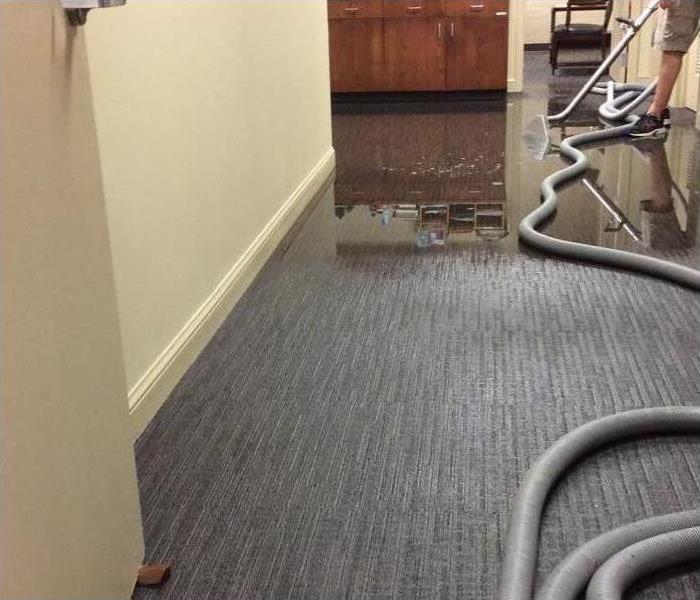 Commercial water damage in Arlington, LA.
Commercial water damage in Arlington, LA.
The Most Common Causes of Water Damage In Businesses
A broken pipe might be your first guess when determining what caused water damage to your Arlington, LA, business. However, there are other factors that could have started it. Correctly identifying these issues allows you to resolve them and prevent them in the future. The following incidents are some of the most common causes of water damage in businesses.
1. Damaged Roof
Severe or even mild weather events are not generally problems since the building itself can withstand most of them and protect anything and anyone inside. Unfortunately, these elements can wear down the structure and areas such as the roof may allow water to seep in. The additional humidity can damage your walls, ceilings and work equipment, as well as cause a mold infestation. Yearly roof inspections and maintenance by professionals can spot and prevent these issues before they start.
2. Leaky or Broken Pipe
There are multitudes of reasons why your pipes can crack or break, from aging materials to high pressure caused by freezing temperatures. The signs of water damage can be challenging to notice because they happen within the walls. Search for musty smells, discoloration and small puddles throughout the building. Ignoring these signs can lead to greater incidents such as flooding. Call a plumber and shut down the main supply immediately to prevent further impact.
3. Defective HVAC Systems
An HVAC system is essential to keeping your customers and employees comfortable and happy. Their heating and cooling operations also require water, so malfunctions can result in this specific type of damage. Clogged or disconnected pipes, damaged ducts, frozen coils, dirty filters and more are some of the issues you should avoid before the situation escalates. Follow the manufacturer's instructions for operation and maintenance. Hire HVAC experts for regular inspections and repairs.
Various factors throughout your business can cause water-based disasters. From a broken pipe to a faulty air conditioner, you will need to watch for the usual culprits and contact water repair specialists once you find the damage.
How To Prepare For a Severe Storm
6/3/2022 (Permalink)
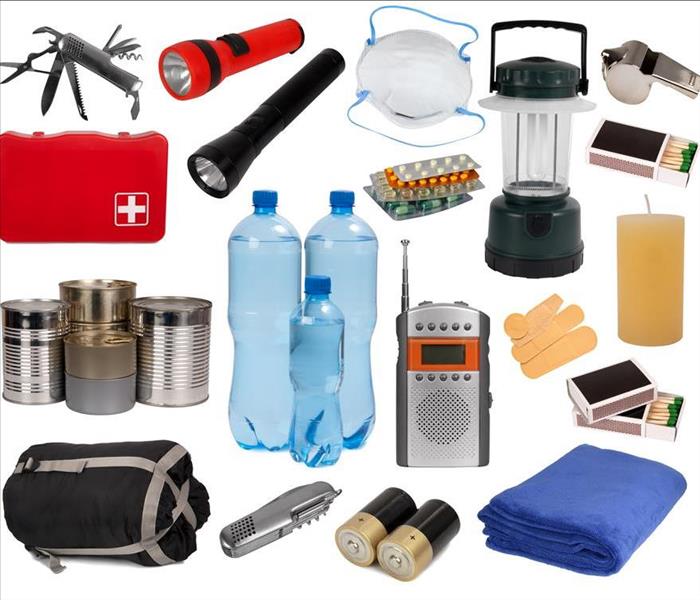 Make a safety kit.
Make a safety kit.
Prepare For a Severe Storm
If you are expecting a storm in Gardere, LA, there are some steps that you can take to prepare yourself, your home and your family. The following actions can help reduce water damage to the building and increase your safety.
1. Seal Doors and Windows to Keep Out Flood Water
During a storm, water can make its way inside the building through cracks around doors and windows. Make sure these are closing properly and that the seals around them are not damaged. You may want to place sandbags near entrances for additional protection.
2. Relocate Important Belongings
If you live in a house with multiple stories, move anything that you can to an upper level. This will help reduce damage from flood water. If your home is single-story, place important or valuable items on shelves or inside airtight containers to keep them safe.
3. Make a Safety Kit
It is not only important to keep your belongings safe but also for yourself and your family. The power may go out during a storm, so prepare a kit with flashlights, radios and extra batteries. Canned foods that do not need to be cooked and bottled water should be included as well.
4. Evacuate If Necessary
In some cases, it may not be safe to stay where you are. If it is likely that the area will flood, you should find shelter somewhere safe until the storm passes. If you return to a flooded building, a professional flood damage restoration company can repair your home and clean affected belongings.
Severe weather can cause a lot of trouble, from creating a dangerous environment to filling your home with flood water. Preparing ahead of time can help you get through the situation more safely. Do what you can to protect your home and belongings, and take shelter somewhere else if you need to.
3 Details of Fire Escape Your Kids Need To Know
5/30/2022 (Permalink)
 It is important to include children in the preparation of a house fire.
It is important to include children in the preparation of a house fire.
Three Things Your Kids Should Know About Fire Escape
Talking with your kids about fire safety might seem a little nerve-racking, but having the right information is crucial to ensuring kids' safety. Clear communication about your fire escape plan helps the whole family to be prepared. Even if you've already covered the basics of escaping a home fire in Baton Rouge, LA, with your children, there are a few details that you may want to revisit and practice during your next fire safety review.
1. Stay Low
There are two important scenarios during which your kids will need to remember to stay low when escaping a house fire:
- Getting out of bed: Have your kids practice safely rolling out of their beds onto the floor. Because heat rises, they should avoid sitting up to get out of bed during a fire.
- Moving through the house: Practice crawling on hands and knees through your home to your fire exits. Also practice crawling with the belly to the ground, in the case of extreme heat.
2. Don't Hide
It is important to remind children to never hide during a fire. The impulse to hide in the midst of a crisis is understandable, but it compromises kids' safety by making it harder for firefighters to find them. If they are unable to safely exit the home, they should stay put where they can be found quickly, such as lying on the floor next to their bed.
3. Pick a Meeting Spot
Talk ahead of time about where you will meet after exiting your home. Choose a spot that is easy to get to but a safe distance from the house. Have your children practice meeting there so they will remember if the time comes.
Practicing these steps helps to secure your kids' safety. In the event of a fire, everybody reaching safety and gathering at your meeting place enables you to focus on the next steps. These include finding a safe place to stay while you have a fire damage assessment done on your home. Clear communication with your children is key to both preparing for the event of a home fire and navigating any changes afterward.
3 Considerations for Fire Damage Estimates
5/25/2022 (Permalink)
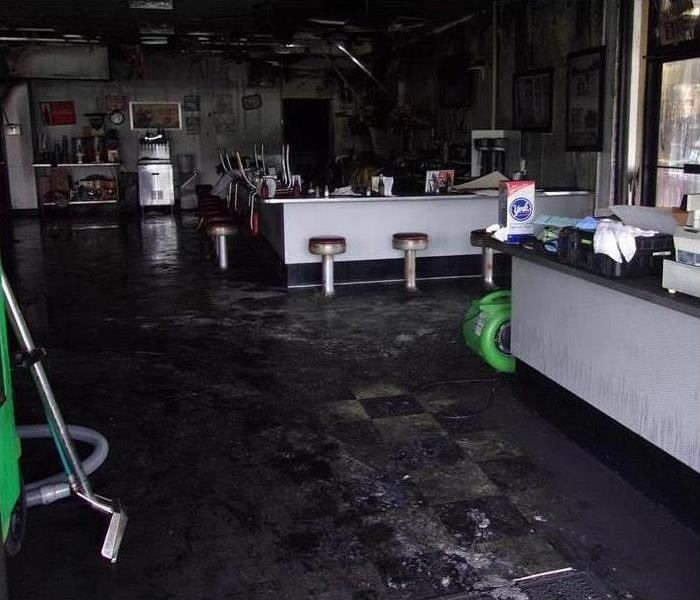 Fire damage in a diner in Arlington, LA.
Fire damage in a diner in Arlington, LA.
Three Things to Think About When Estimating Fire Damage
Business or commercial property owners who have recently experienced a fire at a property should consider the following factors when assessing the damage. All of the following factors should be considered in an estimate for damage caused by a fire to a commercial property in Arlington, LA.
1. The Extent of Fire Damage
The number of square feet of a building that a fire affects is the extent of the damage. Within this area, the degree of damage could range from minor scorching to a total loss of building materials and contents. Have commercial restoration experts inspect the site of a fire to determine the extent and degree of damage and provide an estimate for remediation.
2. The Scope of Restoration
Based on the degree and extent of damage caused by fire, rebuilding or restoration can take days, weeks or even months. Restoration pros should provide a work schedule and indicate a timeframe for completion. The areas and contents of a structure affected by fire may make it necessary for a business to temporarily close or relocate operations until repairs are complete.
3. Business Interruption or Temporary Relocation
When a commercial fire disrupts operations, a business may lose revenue while facing ongoing expenses and restoration costs. Commercial property insurance is helpful for limiting cash expenses, and additional business interruption coverage can offset lost profits or cover the cost of temporarily relocating operations to another location.
An estimate for restoration should factor in the first two considerations. The extent of damage will determine the ballpark price range for the cost and how long it will take to restore or rebuild a property that has suffered damage caused by fire. Business interruption insurance can help to recoup lost revenue or relocation costs during the restoration of a commercial property in Arlington, LA.
Common Reasons Your Toilet Leaks When You Flush
5/20/2022 (Permalink)
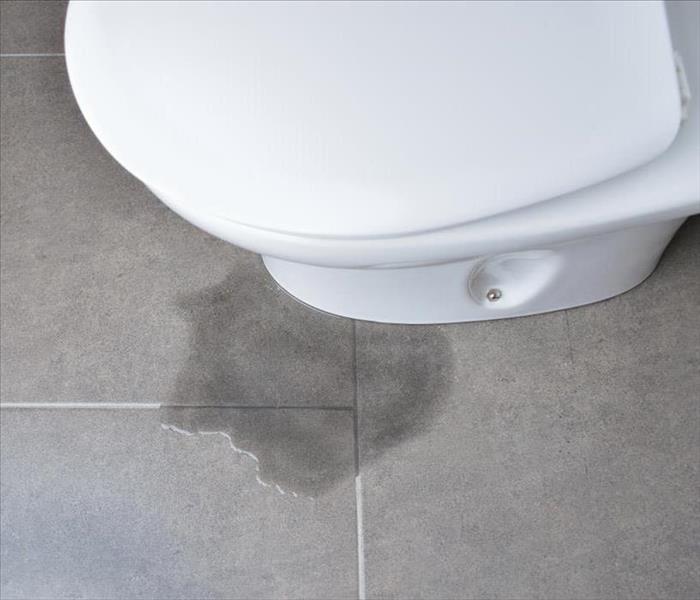 Toilet leaking in Gardere, LA.
Toilet leaking in Gardere, LA.
The Most Common Causes of Toilet Leaks When You Flush
Toilets are a common source of household floods in Gardere, LA. Understanding what causes a leaking toilet can prevent water damage and help you decide if you need to replace your unit. These common culprits are responsible for leaks every time you flush.
Damaged Tank Flange
The flange pipe passes through the floor, secures the toilet, carries waste to the sewer and seals in odors. A rocking toilet and leaks upon flushing are indications of flange problem with symptoms, including:
- A soft floor near the toilet's base
- Water spots on the ceiling beneath the toilet
- Uneven flooring beneath the toilet
Damaged Flapper
The flapper is a rubber or plastic part that rests over the flush valve. It helps keep water inside the tank and lifts it to release it into the bowl upon flushing. Flapper damage causes water to continue flowing into the bowl after flushing and may cause flooding.
Dry Wax Ring
The wax seal between the toilet and the drain pipe requires replacement when it dries out, contracts and allows water to seep out during flushing. Signs of a leaking toilet due to an ineffective wax ring are an accumulation of water at the toilet's base and water stains on the ceiling below it.
Cracks in the Bowl
Trauma and excessive use can cause a toilet's porcelain to crack and leak with every flush. Cracks inside the bowl can cause a damaging bathroom leak. Therefore, replacement of the entire toilet is usually necessary.
Loose Tank
A loose connection between the tank and base of two-part toilets can cause a leak upon flushing. Tightening the bolts that attach these parts or replacing the rubber seal between them usually fixes the problem.
Improper Installation Can Also Cause a Leaking Toilet
Floods and leaks due to appliance and fixture installation errors are common causes of household water damage that emergency flood services address. Therefore, it is essential to carefully execute each step of the toilet installation process.
If you suspect a leak at your home in Gardere, LA, addressing it quickly can prevent water damage throughout your home.
4 Structural Components Prone to Moisture Problems
4/23/2022 (Permalink)
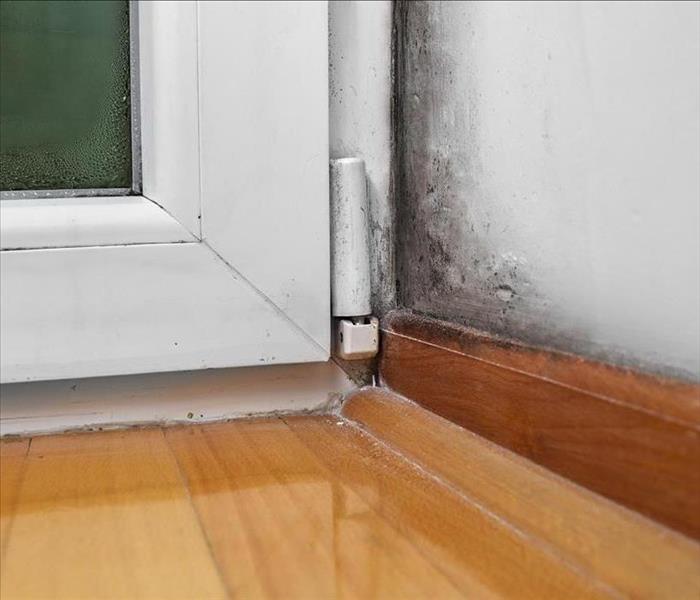 Black mold growth in Baton Rouge, LA.
Black mold growth in Baton Rouge, LA.
Four Moisture-Prone Structural Components
Property owners in Baton Rouge, LA, know a big storm will happen before too long. Ensuring the property is sealed and protected against rain damage is essential to avoiding black mold growing, water losses and potentially expensive repairs. While a certified water damage and restoration company will be able to get your property back to "Like it never even happened," taking preventive measures may minimize the chances of damage happening. To do that, the building envelope—structural components that separate the interior and exterior—must be maintained.
1. Roof
The roof is the main structural component protecting your property. Regular maintenance and annual inspections by a professional are vital to ensuring it does what it should. If the roof is more than 20 years old, it may be time to consider a new one.
2. Doors and Windows
These parts of a building are the most prone to damage. Ensure they always working properly and make necessary repairs as soon as possible. Items to look for include missing screws, loose hinges and worn weather-stripping,
3. Foundation
When it comes to rain damage, finding it in the lower levels of the property is common. Water easily finds its way through any tiny crack or damaged sealant as it follows its natural gravitational path. Along with repairing any damage, ensure the ground outside slopes away from the property.
4. Siding and Masonry
Any gaps, cracks or missing parts open up your property to water infiltration. Signs of siding trouble also include warping and bubbling. For structures with masonry, it may be time for a little upgrade to avoid water issues. It can be reinforced by removing ivy, replacing seals, grouting mortar joints and installing flashing.
As a property owner, you want to keep it in tip-top shape. Regularly inspecting common problem areas and making immediate repairs helps make that happen and minimizes the chances of rain damage.
How To Get Rid of Stubborn Smoke Smells
4/18/2022 (Permalink)
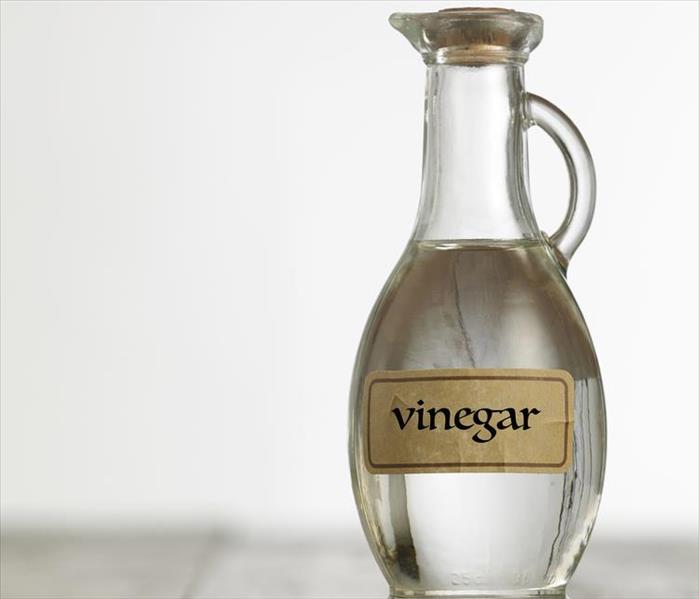 The strong smell of smoke damage can be neutralized with vinegar.
The strong smell of smoke damage can be neutralized with vinegar.
Removing Smoke Odor In Your Home
Whether from a fire or from a bad cigarette habit, smoke cleaning can be difficult and frustrating. No matter how hard you scrub, the smell seems to linger in your Arlington, LA, home and you feel as if your space will never be the same. Here are some steps that may help you get a good start on it before you reach out to a professional odor elimination specialist.
Determine the Source
There are a variety of reasons you may have a stubborn smoke odor in your home. Determining the source will help you decide the best route to get it cleared out. The smell may come from fire damage, years of indoor cigarette smoking, or even from outdoor wildfires near your home. The smell will leach into fabrics and any porous surface in your home, including furniture, clothing, dishes, floors and walls.
Neutralize With Vinegar
The strong smell of smoke damage can be neutralized with vinegar. Begin by placing several small bowls around the area where the odor is strongest. These will begin to absorb the noxious fumes and reduce the smell. You can also boil some vinegar on the stove to speed up the process, allowing it to simmer for an hour or two.
Clean, Clean, Clean
Smoke cleaning will also require you to remove and thoroughly scrub anything that was within the damaged area. All clothing, furniture cushions, or other fabric items should be washed. You'll also need to clean wall hangings and hard surfaces. Sprinkle baking soda on carpets and allow it to sit for a while before vacuuming up.
Use Ammonia
The most stubborn smells may require an ammonia treatment to fully destroy them. You can add some to the laundry when washing clothing, bedding and other fabrics. The stronger smell will be more unpleasant than vinegar, but you can also place bowls of ammonia throughout the home to absorb smoke smells.
Smoke cleaning takes a lot of work, but the time invested is worth it if you can eliminate the smell. Follow these tips to do it right.
Flood Water Prevention Methods
4/5/2022 (Permalink)
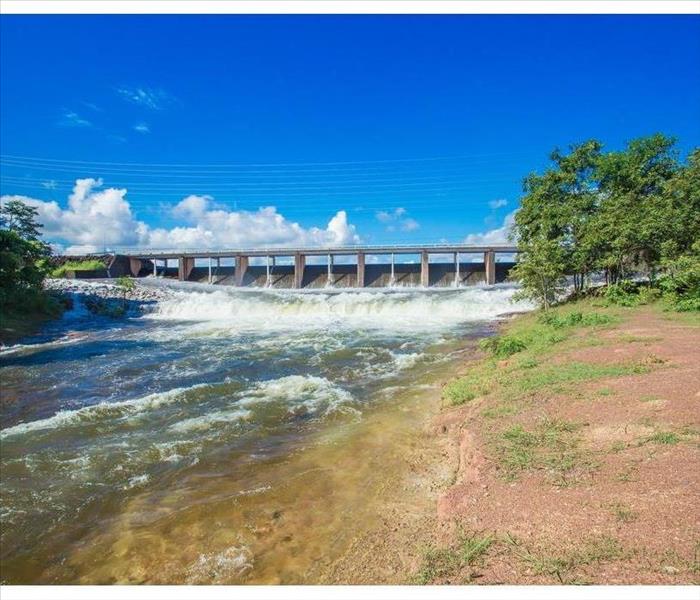 A dam can be built from sandbags to block water.
A dam can be built from sandbags to block water.
Methods of Flood Water Prevention
Engineers take considerable leaps to stop high water from flooding city streets and neighborhoods. As a business owner, you should take note of what measures Gardere, LA, has in the event of a natural disaster or flood.
These are some of the common methods:
- Levees are concrete or sand embankments to prevent water overflow.
- Dams block water completely, only allowing an area to flood when necessary.
- Locks allow ships to move from higher water areas to lower areas.
- Dikes are long walls or ditches that prevent the sea from crossing into cities.
- Gates can block water when necessary but open and close to permit traffic and water flow.
Unfortunately, none of these methods are perfect. During storm season, don't let your business be caught unawares by high water. You should be ready to reach out to a water damage remediation company as well as familiarize yourself with how your city protects itself.
Unique Barriers
Some cities have devised unique ways to keep floodwaters from entering business and agricultural districts.
The Maeslant Storm Surge Barrier in the Netherlands is designed to open and close completely. When it is open, the water flows freely. As the water rises, the walls close to stop flooding and fill the adjoining pools with excess water. When the flooding recedes, the barriers open again, returning the channel to normal flow.
The barriers on the River Eden in England are a newer solution for flood prevention. They replace traditional sandbags with hydraulic barriers that can be raised or lowered when necessary. The barriers are now computer-controlled to prevent them from accidentally lowering.
Barriers To Protect Your Business
Along with understanding what your city does to protect against a flood, you should also be prepared to protect your business yourself. A dam can be built from sandbags to block water. Retention ponds, like small versions of the Maeslant Storm Surge Barrier's retention pools, and french drains help control pooling water.
When a storm is coming, there are many things you can do to help safeguard your business from high water conditions.
Steps to Take After Your Business Suffers Fire Damage
3/23/2022 (Permalink)
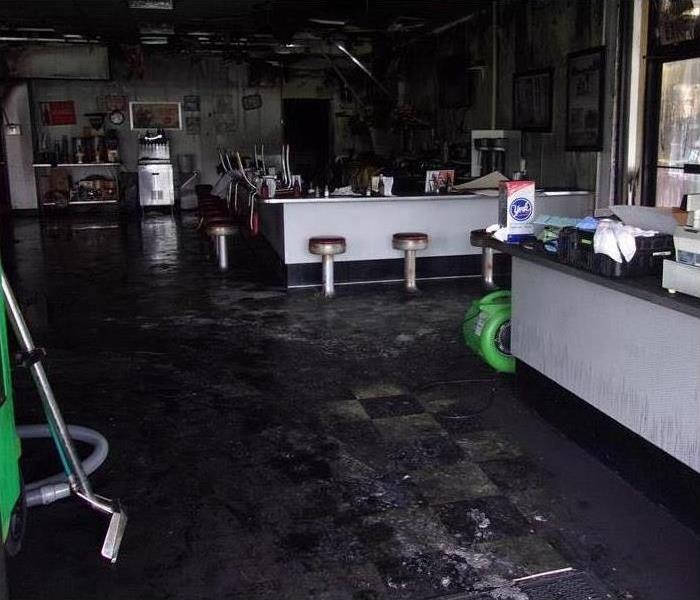 The aftermath of a fire in Baton Rouge, LA.
The aftermath of a fire in Baton Rouge, LA.
Fire Restoration Process
A fire is a devastating incident, and you may feel overwhelmed if your business in Baton Rouge, LA, has been affected by fire damage. There are some key steps you should take in the aftermath of a fire in order to ensure that your business is up and running again as seamlessly as possible. Here are some tips to guide you through the fire restoration process and ensure that everything returns to normal again.
Stay Away From Damage
While you may be tempted to try to repair objects that have been damaged by the fire, it is best not to touch any damaged items in your business. Take the following precautions when surveying the effects of the fire:
- Avoid washing walls or painted surfaces
- Do not turn on lighting fixtures if walls or ceiling are wet
- Keep your hands clean to avoid spreading soot particles
- Refrain from cleaning damaged electronics
Staying away from damaged articles until a professional arrives can help prevent your business from undergoing further damage.
Call Your Insurance Company
Make sure to call your insurance company as soon as possible to report the fire damage. The faster you inform them of your loss, the faster you can focus on fire restoration and the less likely you are to miss important deadlines. Once you’ve spoken with an agent, you can make a fire insurance claim. Taking care of the logistics after an incident can help you be well informed during a stressful situation.
Turn off Utilities
Until help arrives, it is crucial to do what you can to minimize further damage. Turn off all the utilities in your building, including gas, electricity and water. You can shut off the water at the main valve and turn off gas and electricity at the meter. Once you’ve done this, refrain from using any utilities until a professional has inspected them properly.
Whether you need smoke cleaning services or water removal from firefighting efforts, a skilled fire restoration professional can conduct a fire damage assessment and help bring your business back to normal.
How Does SERVPRO's Electronic Claims Service Help?
3/10/2022 (Permalink)
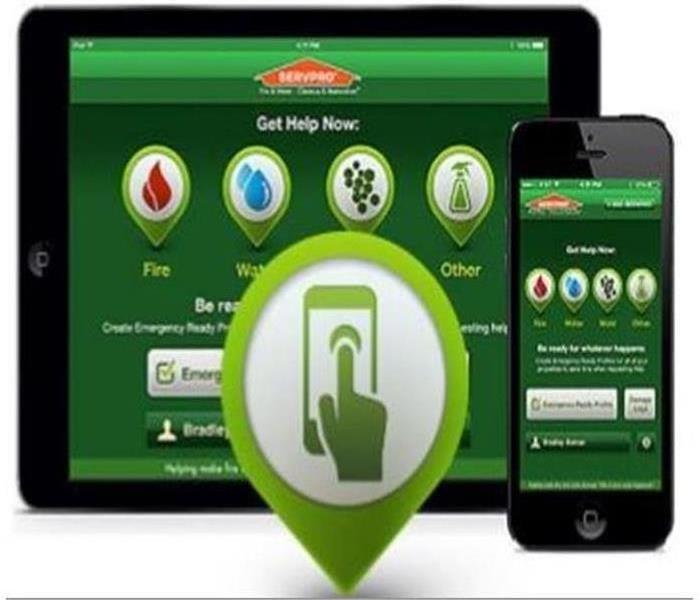 SERVPRO's electronic claims service offers more security than paper records stored in an office.
SERVPRO's electronic claims service offers more security than paper records stored in an office.
SERVPRO's Electronic Claims Service
When your Arlington, LA, client files an insurance claim on their damaged property, it's critical to get the process under way as quickly as possible. Over the years, SERVPRO has become a trusted leader in the damage mitigation and restoration industry.
SERVPRO's electronic claims service provides several benefits:
1. Easier Collaboration
When information passes through the hands of insurance agents, adjusters and damage restoration professionals, it helps to have all the data in one location. Unlike paper documents, electronic files provide everyone access, allowing for collaboration without the risk of data loss. An insurance agent can prepare a claim by reviewing the electronic claims system. Damage information and photos are just a couple of parts of the electronic claims service, along with access to nationwide comparisons.
2. More Security
SERVPRO's electronic claims service offers more security than paper records stored in an office filing cabinet. Security teams back up and monitor the digital files. Not only is the information protected from being physically destroyed (e.g., by fire), but its confidentiality is also more secure.
3. More Accessibility
Data related to the insurance claim can be easily viewed and inputted from the office or in the field by everyone involved. The insurance agent, adjuster and remediation specialists can access it via smartphone, tablet or computer.
4. Less Risk of Errors
Everyone engaged in the claims process sees updates online through the electronic claims service. This ensures that all remain on the same page, reducing the chance of mistakes. Fewer mistakes mean a more accurate compensation value so the restoration can be completed as quickly as possible.
5. Quicker Resolution
When restoration professionals submit detailed data regarding damage and the cost estimates, the agent and adjuster can also view it. This real-time exchange makes for a much faster resolution than the traditional claims process, in which information is typically distributed through the mail.
The longer the insurance claim process, the more damage can affect the property. The SERVPRO electronic claims service ensures that it's handled quickly and efficiently.
Prevent Plumbing Disasters by Staying Proactive
3/1/2022 (Permalink)
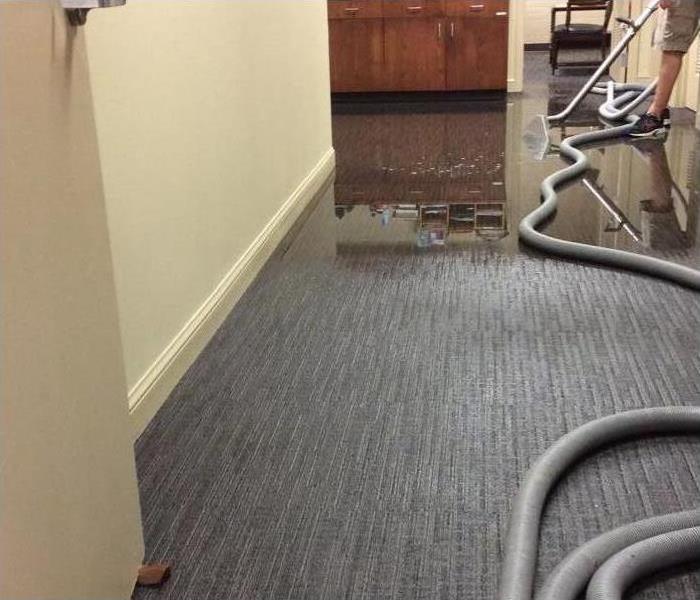 Commercial water damage in Gardere, LA.
Commercial water damage in Gardere, LA.
Four Ways To Prevent Plumbing Disasters
Being proactive when it comes to plumbing problems is a great way to prevent disasters and extend the life of your business’s plumbing system. Conversely, ignoring minor signs and waiting for disaster to strike can lead to costly repairs and additional damage. If you want to save money, and perhaps save your sanity, learning how to stay ahead of your plumbing issues is especially important in Gardere, LA.
1. Find a Professional Plumber
Even before you become aware of any potential issues, it is a good idea to get the contact information of a reliable plumbing service. Knowing who to call in the event of a broken pipe or similar emergency can save you from the headache of scrambling to find one later when the need is urgent. It is also recommended to have the number of a commercial water cleanup service available, in the event of an unforeseen water disaster.
2. Schedule Routine Inspection and Maintenance
Routine maintenance is important for ensuring your plumbing system is working properly. Plumbers will advise you on proactive measures, such as upgrading old equipment that is no longer reliable. Upgrading can save you money in the long run by helping you avoid leaks and other damage.
3. Fix Small Problems
Take care of minor plumbing problems like dripping faucets and slow draining sinks before they morph into expensive issues. Dripping faucets may not seem like a big deal, but they can run up your water bill over time.
4. Watch Your Monthly Usage
Keeping an eye on your monthly water bill can help you spot problems that go unnoticed to the naked eye. If your bill skyrockets without any explanation, you could have an underlying problem, such as a faulty pipe behind your walls or a major leak in your water main.
Being proactive is one of the most effective ways to ensure you catch plumbing problems in your building before they start. Investing the time and money to maintain a good working system will far outweigh the cost of major repairs down the road.
The Importance of a Claims Inventory Service
2/23/2022 (Permalink)
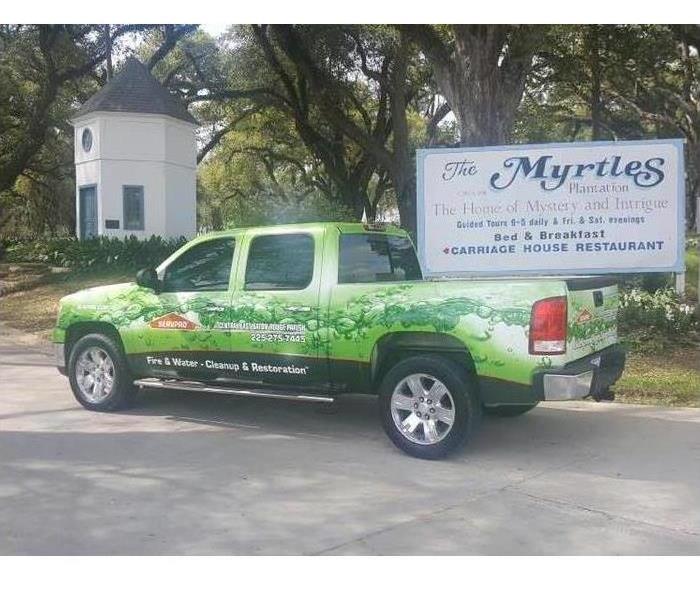 With highly-trained professionals that are always available in many locations across the country, SERVPRO is an obvious choice.
With highly-trained professionals that are always available in many locations across the country, SERVPRO is an obvious choice.
What A Claims Inventory Service Is And Why It's Important
Making an insurance claim is an important step for homeowners to take after their home in Baton Rouge, LA, is affected by flooding, fires or storms. However, the claims process can be overwhelming. Working with a restoration company that has a claims inventory service can improve the process in a variety of ways.
1. Organizes Documentation
Insurance companies often require a myriad of information, including photographs, receipts and forms after a disaster occurs. Keeping track of various documents can be difficult for homeowners whose households are damaged. However, working with SERVPRO, a restoration company that uses a claims inventory service, ensures that adjusters and homeowners can clearly see what has been documented.
2. Access to Information
Sometimes, an insurance agent or a homeowner needs access to information quickly. However, it can be easy to misplace important documents that are related to the insurance claim. A restoration and cleanup company that has a claim inventory service will allow everyone involved to view relevant information as needed. Homeowners and agents can use the information found on the claims inventory service to make the best decisions throughout the restoration.
3. Quicken the Claims Process
If making a claim takes a long period of time, it’s possible that more damage may occur to a home. In addition to adding to the stress of adjusters and homeowners, a long claims process can ultimately increase the cost of the claim and can prolong the restoration procedure. A claims inventory service that keeps all documents organized and accessible increases the chances of a quick claims progression and can make the restoration run more smoothly.
Making and managing an insurance claim doesn’t have to be complicated. SERVPRO uses the latest technology and helps insurance agents and their clients with a claims inventory service that keeps documents organized, is easily accessible and can ultimately quicken the process of making a claim.
How Can You Prepare for Flood Damage?
2/23/2022 (Permalink)
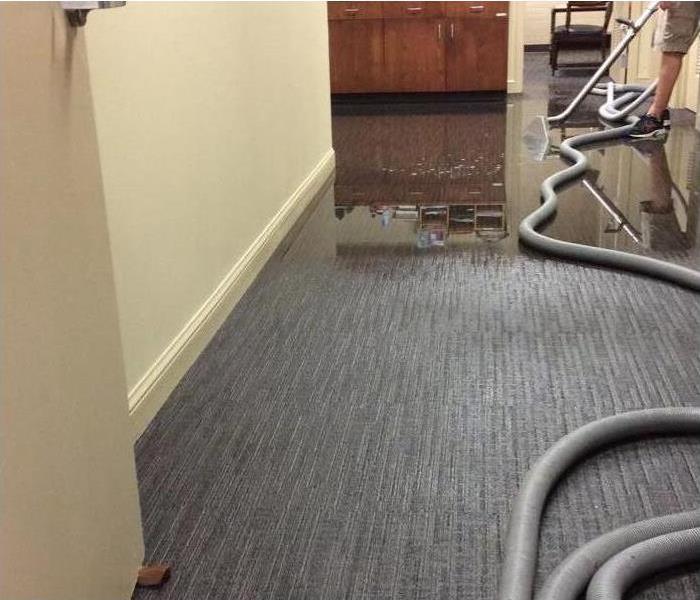 If you are having flooding issues and suspect storm or water damage, give SERVPRO a call on our 24-hour service line.
If you are having flooding issues and suspect storm or water damage, give SERVPRO a call on our 24-hour service line.
What Can You Do To Prevent Flood Damage?
Mother Nature is unpredictable, but even when you can’t prevent or predict flooding, you can still be prepared. Flood damage and storm damage can cause costly and catastrophic losses that many commercial businesses struggle to recover from. With appropriate preparations, you can minimize loss of property, inventory, and livelihood.
1. The First and Best Preparation Is Prevention
If you’re selecting your first commercial location, one of the best things you can do is choose a site that’s both advantageous to your business needs and positioned strategically in a low-flood zone. Historical flood data in Gardere, LA, can tell you which areas are less likely to deal with flooding and runoff.
If you’re already established, though, you can still mitigate damage by ensuring your property is water-tight. Check weather stripping and sealing, and where applicable, use waterproof coatings and paint.
2. Stock Up on Sandbags
When you know bad weather is coming, it helps to have sandbags on hand. Sandbag your doors and windows to create a watertight seal and prevent windows from breaking inward. You can also sandbag your walls if you have enough, particularly if you’re worried about water damage or about walls breaking inward under heavy flooding.
3. Seek High Ground
If you have the ability to move inventory, furniture, and office equipment to a higher floor in the event of a flood, take advantage to keep your investment safe. Migrate anything that isn’t fixed in place. Organize and label everything neatly as needed; you may also need to create a labeled floor diagram to replace things after.
4. Check for Leaks
Although sandbagging will help prevent some water intrusion, check your entire property for leaks. This includes checking your ceiling. Sandbags can’t prevent roof leaks, which can cause major storm damage and make the work of restoration specialists even more difficult. One good way to test if areas are watertight is to check if they’re airtight. You may notice drafts already, but you can also use a can of air to check any seams or jointed areas.
Keep Your Pet Safe in a Home Fire With a Pet Evacuation Plan
2/23/2022 (Permalink)
 Keep your pets and family members safe by having a well thought out plan if a fire emergency ever does occur.
Keep your pets and family members safe by having a well thought out plan if a fire emergency ever does occur.
With A Pet Evacuation Plan, You Can Keep Your Pet Safe In The Event Of A House Fire.
If a fire occurs in your home in Erie, CO, your first priority should always be to get yourself and all your family members out safely. While you should leave belongings behind until a fire restoration company can retrieve them, you will likely not want to leave your pets behind. It is important you have a plan in place to evacuate your pets in case a fire emergency ever occurs. A good place to start is by including your pets into your home escape plan.
5 Pet Preparation Tasks You Should Complete
Preparation is key when it comes to protecting your pets in a fire. In case your pets are in an unsafe location that you or your other family members can’t get to, there are several steps you can take to better the chance of their rescue:
- Place your pet near a door so firefighters can quickly save them.
- Keep an updated pet alert window sling on the front window of your home.
- Set aside a disaster supply kit just for your pet in the case of a fire emergency.
- Place important pet ownership documents and proof of vaccinations in a fire box.
- Teach your pets the “Come” command so you can easily direct them towards you.
Creating Your Pet Evacuation Plan
In addition to these important pet safety tasks, you will need to create a pet evacuation plan for your pets. Assign a specific individual or two to being in charge of retrieving the pets. If your pets are located in a specific part of the house during the night, identify several different routes to that location. Lastly, make sure to practice the evacuation plan several times.
Keep your pets and family members safe by having a well thought out plan if a fire emergency ever does occur. While your pets might be able to escape safely on their own, you can increase the chance of their rescue with these tips!
4 Types of Mold You May See in Your Home
1/30/2022 (Permalink)
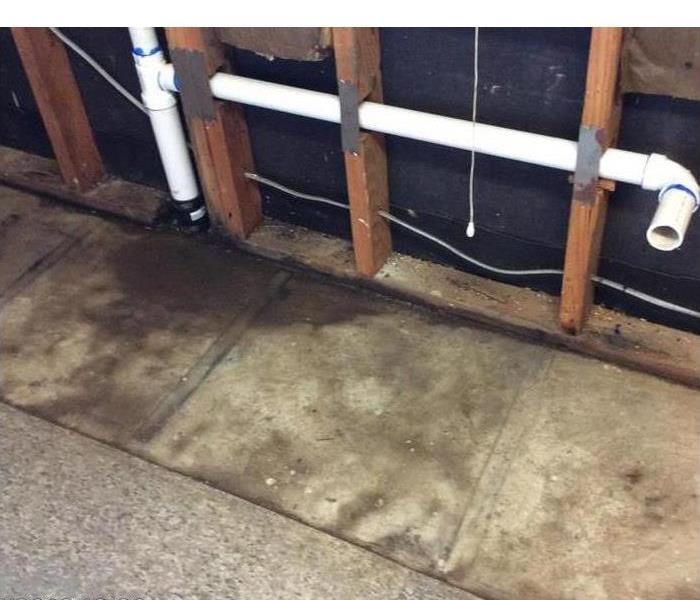 Water can lead to mold growth.
Water can lead to mold growth.
Mold Growth In Your Property
There are thousands of types of mold in the world, and many of them can find their way into your home. If you notice mold growth on your walls, floors or ceiling, you should call your local mold remediation company immediately. These certified professionals can identify the type of mold and use that information to formulate the best plan for getting rid of it.
1. Stachybotrys
More commonly known as black mold, this fungus is attracted to damp areas, particularly those that have water damage that has gone unnoticed or untreated for several weeks. You may notice black mold on walls or near air vents where condensation has collected. It may also infest cardboard, paper or wood.
2. Ulocladium
This type of mold is particularly attracted to areas that tend to have high humidity due to extensive and frequent water usage, such as kitchens and bathrooms. This mold growth may appear alone or beside other household molds.
3. Mucor
You are likely to see thick swatches of mucor near your HVAC unit. It thrives on the condensation that gathers around air conditioner coils and vents. Once it starts to grow, it can multiply very quickly. It is advisable to call mold specialists in Baton Rouge, LA, as soon as you see these greyish white patches.
4. Chaetomium
This fungus often remains out of sight. It shows up in areas that have ongoing water damage. Attics and basements where leaks have occurred may start to take on a musty smell. This is a sign that you have a mold problem that needs to be mitigated.
No matter what type of mold growth you find in your home, the best course of action is to call in the experts. These technicians are trained to assess and strategize ways to overcome mold, and they have the skills to clean your home and restore it to its original condition.
4 Facts About Commercial Smoke Damage Coverage
1/26/2022 (Permalink)
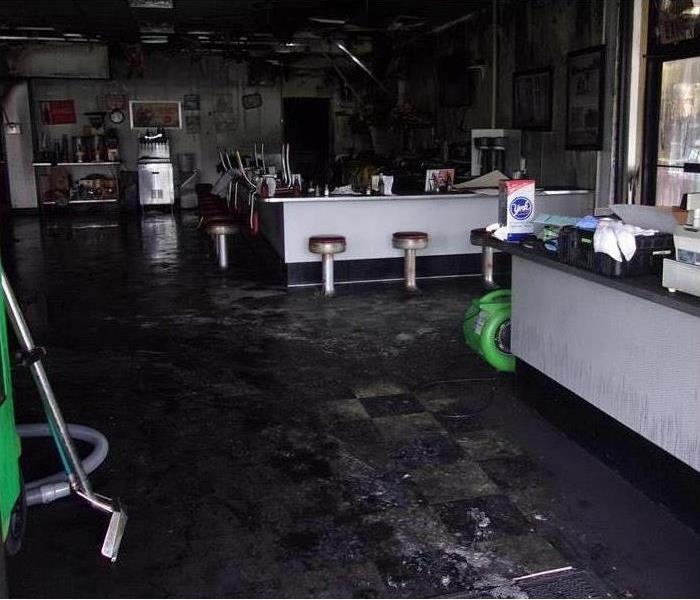 Commercial fire damage in Arlington, LA.
Commercial fire damage in Arlington, LA.
Facts About Smoke Damage
An owner of a business or commercial property that has recently suffered a fire may be unsure about the types of damage commercial property insurance covers. Here are four facts about smoke damage coverage.
1. Smoke Remediation Is Usually Covered
Many policies cover smoke cleaning due to fire or another covered peril. If smoke or soot damage results from some other source, it may be more difficult to file a claim. Some commercial property insurance providers require proof of damage. It is more likely that a policy will cover cleanup and restoration than replacement.
2. Damage Caused By a Nearby Fire Should Be Covered
If your business has not suffered a fire but has smoke damage from an incident nearby, this should also be covered by your insurance. Once again, it may be necessary to demonstrate the severity of damage.
3. A Variety of Treatments Are Available
A smoke cleanup service can recommend the best treatment method for a commercial property. If a brief evacuation is possible, an ozone machine or thermal fogging treatment can achieve noticeable results in the least amount of time. If occupants must remain in the structure during any part of treatment, slower options such as a hydroxyl generator or vapor modification may be ideal.
4. You Should Have Physical Proof and Documentation
If an insurer is reluctant to cover smoke odor remediation, it may be beneficial to retain evidence of damage. You may want to hold off on scheduling cleaning until an adjuster can visit or keep at least one of each damaged type of item if you pursue treatment and reimbursement.
These four facts can help business and commercial property owners make more informed decisions when dealing with smoke damage at a structure in Arlington, LA. Be sure to check policy limits and provide insurers with an estimate from a reputable smoke cleaning service.
Cleaning After a Flood
1/10/2022 (Permalink)
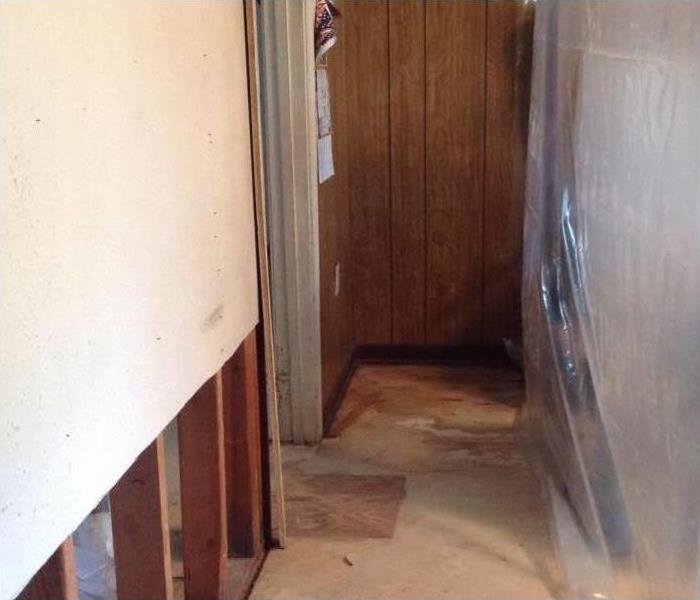 Water in your home requires a lot of work.
Water in your home requires a lot of work.
Cleaning After a Flood
When floodwater in the home is gone, and most of the heavy work is finished, many Gardere, LA, families and individuals want to slip back into life as they knew it before the disaster. Unfortunately, all the wood, fabric, drywall, and other materials exposed to the water have probably absorbed the liquid. Moving belongings back into your house too soon could lead to ongoing problems, such as mold growth, pest infestations, and long-term deterioration. Remember, flood water isn't clean; it needs to be handled differently than other types of water disasters, such as a broken pipe.
Focus on Safety
Before taking your first recovery steps, make sure you know how to proceed safely.
• Arrange structural, electrical, fire, and gas inspections, so you know the home is safe to enter.
• Wear sturdy, protective clothing. It's best to have waterproof protection.
• Don't mix chemicals, such as chorine and ammonia, when cleaning.
• Watch out for pests hiding in flooding, including snakes and fire ants.
If you're not sure about safety and water in the home, get more information from water damage remediation professionals and local authorities.
Contact Appropriate Professionals
Your next steps should include contacting your insurance adjuster, scheduling repairs and cleaning from professionals in Gardere, LA, and making sure your electricity and gas have been turned off. With these tasks completed, move on to cleaning and disinfecting your property.
Identify the Work
Working closely with the remediation professionals, you'll separate items into at least three categories: to clean yourself, to leave for the technicians, and to discard. There are many repairs you can handle yourself. Clothing may be wet or could have a mildew smell. It's generally safe for laundering or dry cleaning those items on your own. However, expensive and structural items should be turned over to professionals. Your carpets, flooring, furniture, and walls present cleaning challenges that require specialized techniques and training. Finally, some items, such as mattresses, must be thrown out for your family's health.
Water in your home requires a lot of work even after floods recede. When you know what to do and who to call for help, that work can progress smoothly and efficiently.



 24/7 Emergency Service
24/7 Emergency Service

































